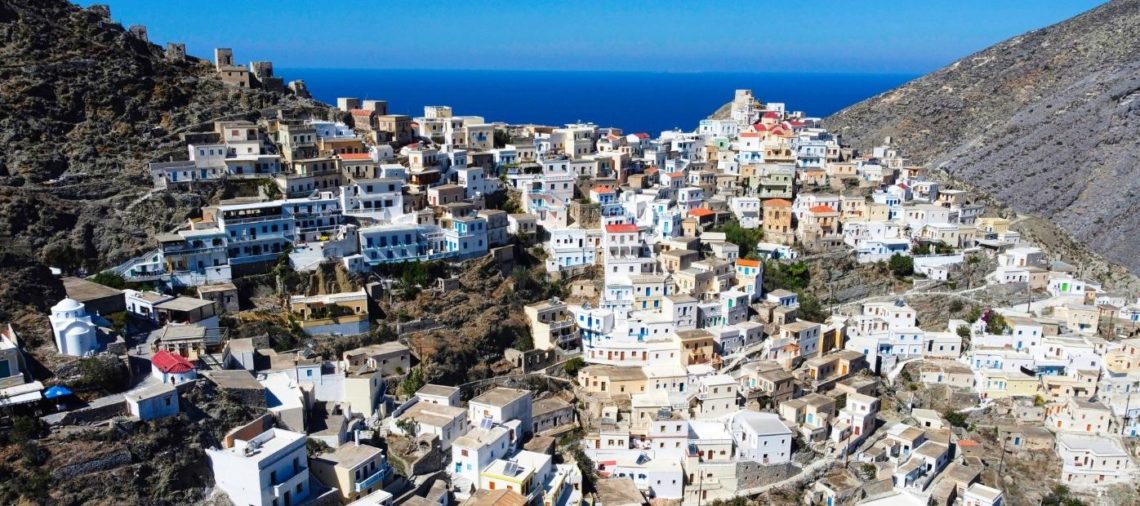If you visit the island of Karpathos – and it’s worth it, I’ve written the arguments here – you’ll find that the place it prides itself on most, apart from the beaches, is the village of Olympos. At first glance, you’d think this is just another village of many on other Greek islands. But that’s not quite the case. Olympos is a somewhat more special village, and in some ways, I would say it defines the tourist reputation of Karpathos to a large extent.
During my visit to Karpathos, I went to Olympos twice. Situated about 60 km northwest of Pigadia, the island’s capital, Olympos has a great location; its houses are built on the top of a mountain and its slopes in amphitheater-style, both west, and east. The village has an undeniable magnetism that makes you want to see more and more, even though it has a population of no more than 4-500 inhabitants.
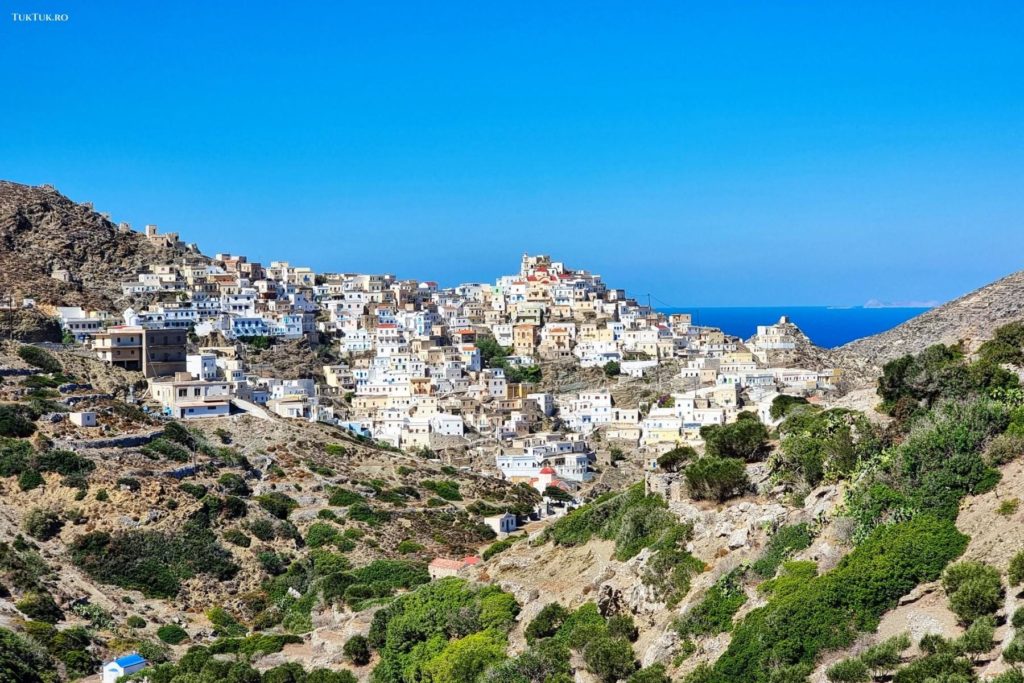
For this reason, to visit Olympos, you have to leave your car in the car park at the entrance to the village and walk along the narrow alleyways that run between the houses perched on top of each other. Thanks to this spectacular location, Olympos offers breathtaking views of both the sea and the mountain.
How was born the village of Olympos
From the road that connects to Olympos village, a few kilometers before the entrance, you will be ‘struck’ by the scenic spectacle offered by the rural jewel of Karpathos. Then, the view “zooms in” through the lens of a magnifying glass as you get closer. In the parking lot, the statue of a woman dressed in traditional local garb peers down the “mountain” slope, informing you from the start of the matriarchal character of this settlement whose women are said to have been (and are) true wonder women who shaped the history and culture of the settlement. We’ll see a little later why.
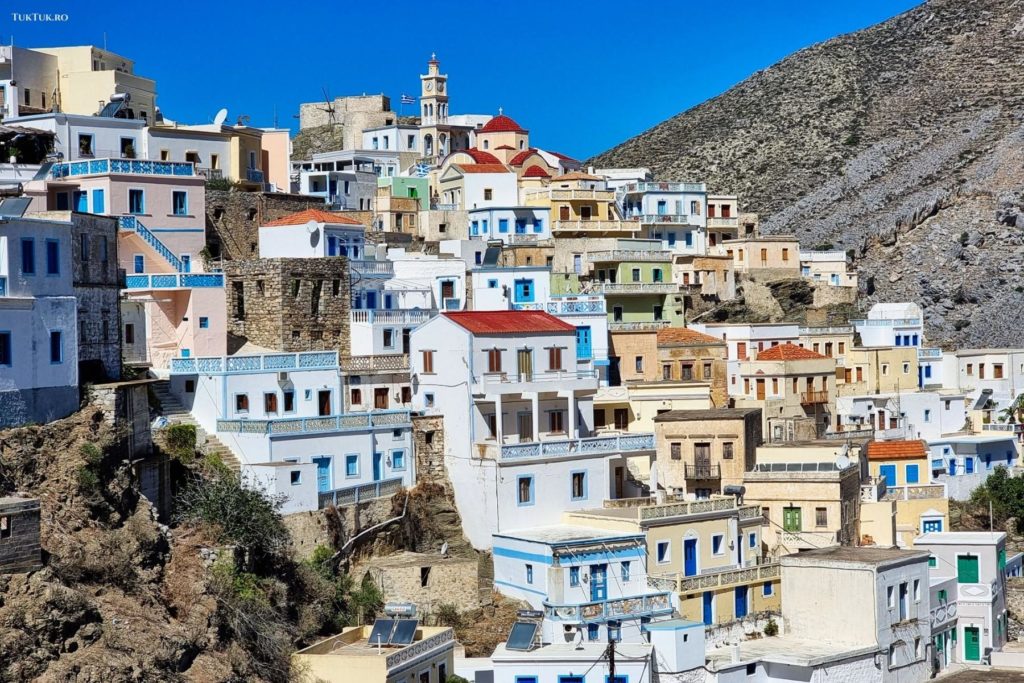
By the way, the 3 km road to Olympos, which branches off from the main road, is worth noting an interesting detail. Olympos was cut off from the southern part of the island for centuries, with this paved road only opening in 2011! For a long time, therefore, the only link with the outside world and the other villages of Karpathos was the Diafani port. This was the only way to get to Olympos: by boat to Diafani and then 8 km to the top where the village is perched.
This semi-isolation for centuries has meant that Olympos remains a very traditional village today, which sometimes gives the impression that time has stood still. And this traditionalism brings out some exciting things I don’t think you’ll find elsewhere. The Olympians are descendants of the Byzantine Empire, and Byzantine traditions survive in their most vivid form.
To understand this we need to look a little into the historical past of the settlement. Olympos was built between the 7th and 9th centuries, when the inhabitants of the coastal village of Vroukounta were regularly attacked by Arabs and pirates (the ruins of this village can still be seen between Avlona and Tristomo). They were forced to leave the coastal area and settle inland, beyond the mountains, in an attempt to protect themselves from attack. The community was formed in this wilderness, isolated from the rest of the island, because there were no roads connecting them to other villages.
It has remained this way for centuries, resulting in little change. Old customs have been preserved, the architectural style has remained intact, and the appearance of the houses, inside and out, has remained the same. Even the dialect has been preserved, a dialect of its own, which Greek speakers will immediately pick up.
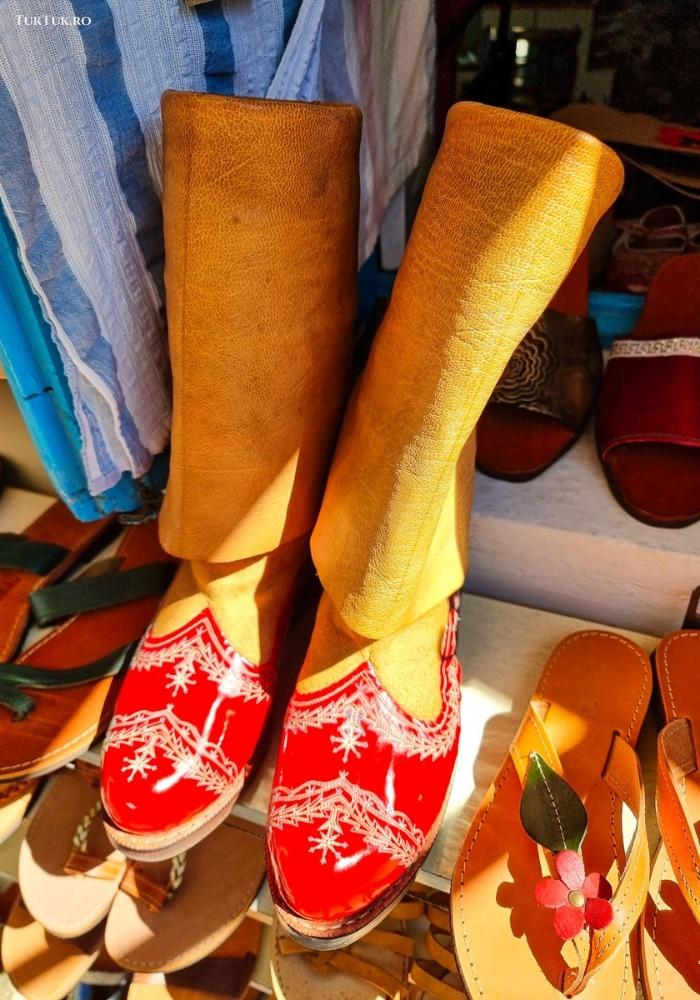
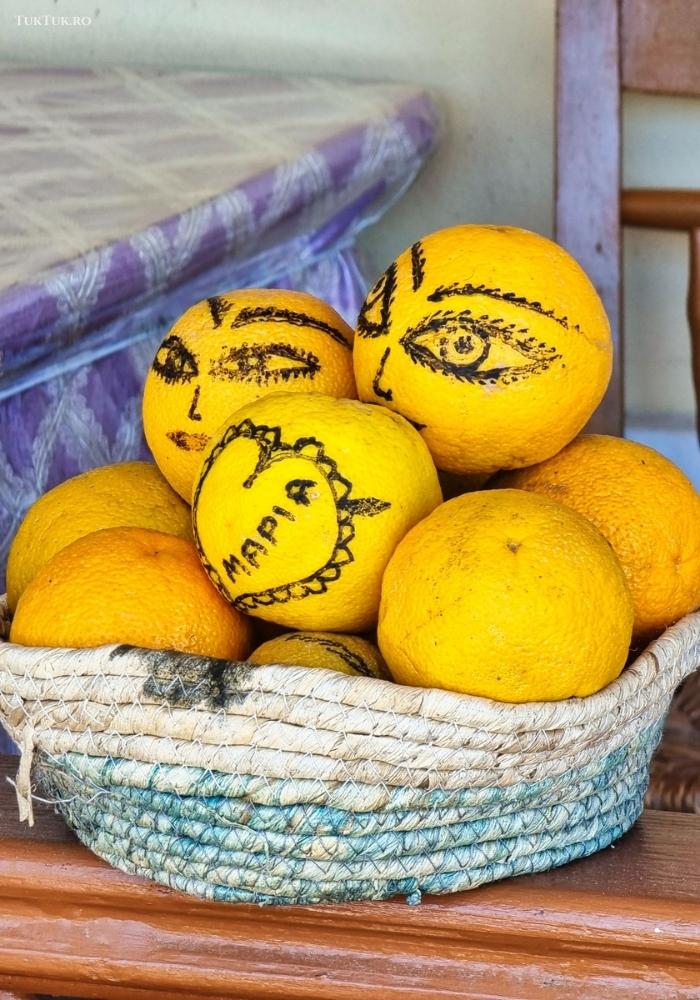
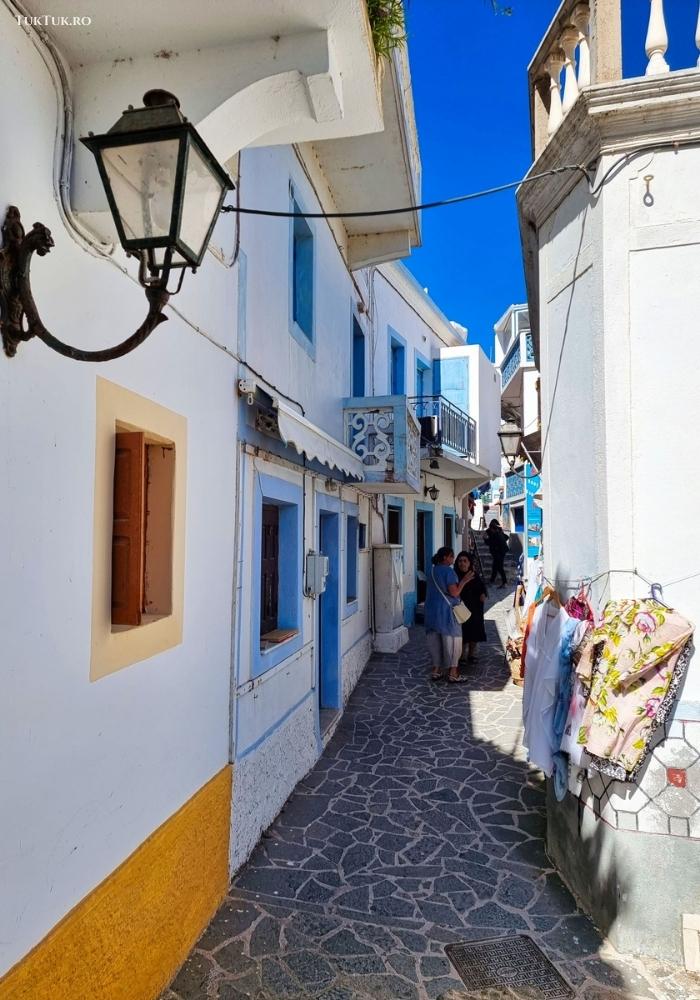
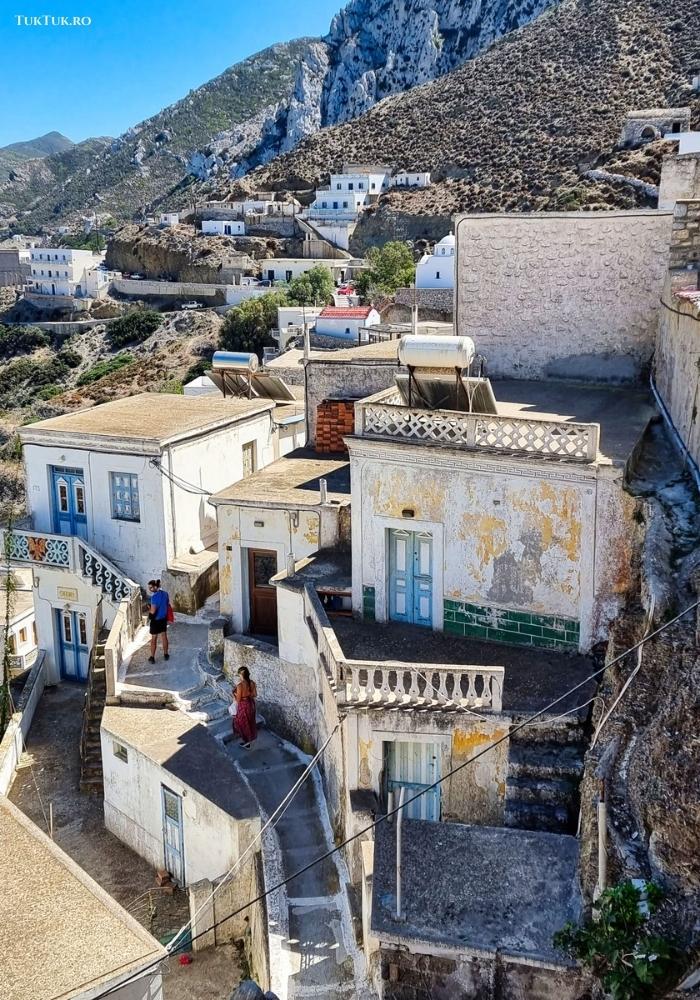
As I said, the Olympians consider themselves descendants of the Byzantine Empire. This is one of the few places in the world (if not the only one) where visitors can still experience Byzantine traditions. In fact, the Olympians’ way of celebrating during festivals and classical feasts has been registered as a UNESCO World Heritage Site.
Olympos, a matriarchal village with special traditions
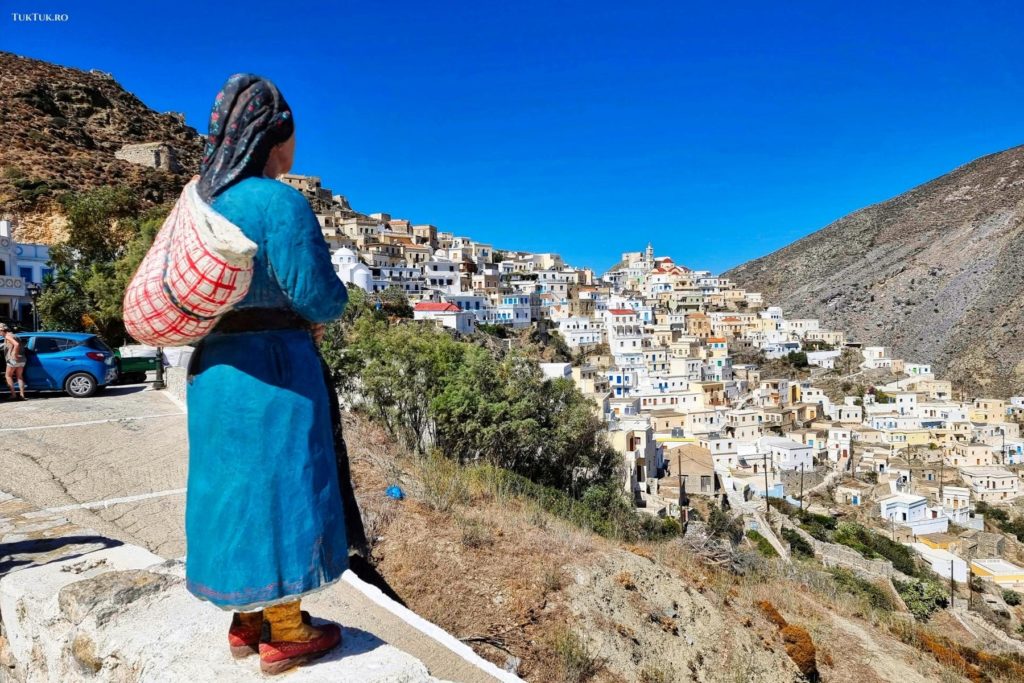
The inhabitants of Olympos are very proud of their traditions. The women wear two types of costumes. One is the working day costume, which consists of a simple apron and a scarf with a single fold around the head; the other is the festive one, with colorful clothes and a double row of gold coins.
As soon as you enter the village, you’ll notice that the women are dressed in traditional clothes. And that, in general, they ‘run’ pretty much every local business. That’s how it was in Olympos: in the old days, women were extremely exploited by men. They did practically all the work – digging, raising the children, caring for the house, etc. The men… sat in the tavern, drank, played backgammon, and commented. That’s the way things were for centuries. Until…
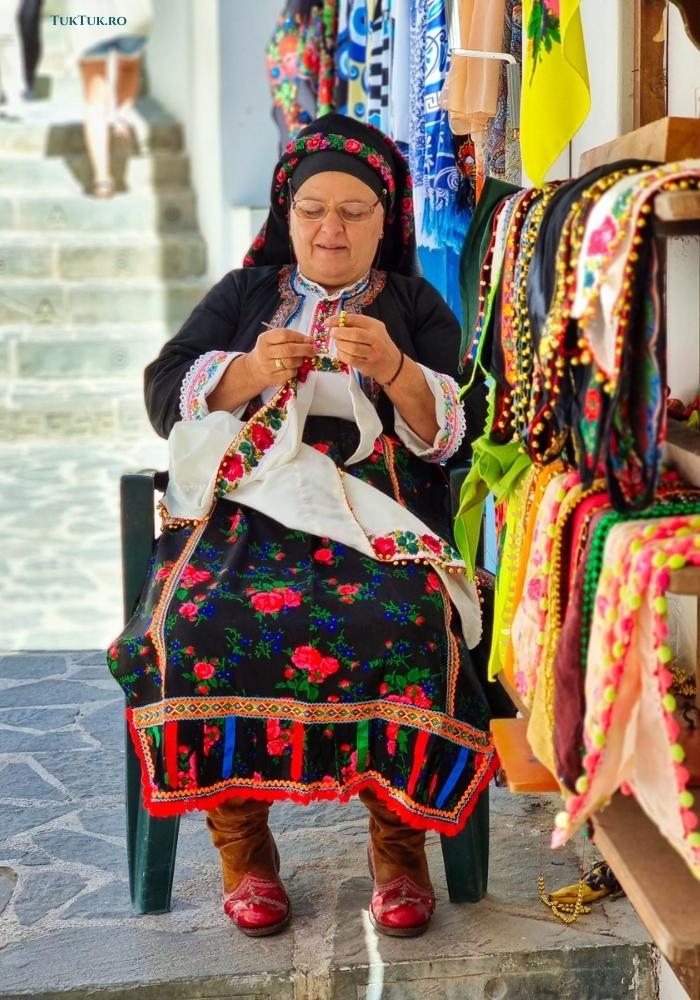
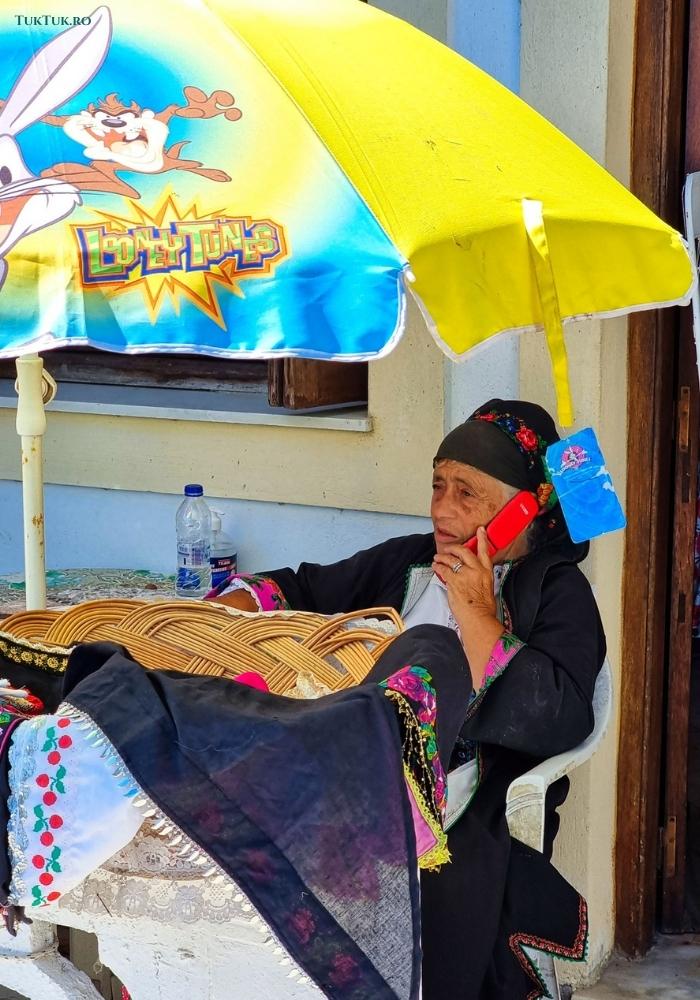
Until 2011, when the road connecting the southern part of the island was built. Olympos slowly began to be visited by tourists, and the women realized it was time for something else. They put the hoe aside and began to arrange their houses in such a way as to accommodate the increasingly fascinated tourists. They turned some of their properties into taverns. They set up tourist businesses and started earning good money. The village flourished. In the meantime, the men stayed in the taverns, drinking ouzo, playing backgammon, and chatting.
Olympos is a matriarchal village. Women rule; they have the money and the power. And one more very important thing, characteristic of this unique village: in Olympos, the father’s property is passed on entirely to the family’s first-born son. Similarly, property inherited from the mother is left to the first-born daughter. Children born later have no rights to their parents’ property. Traditionally, the first-born formed the ruling class, distinguished from the other classes by their dress and living in a particular part of the village.
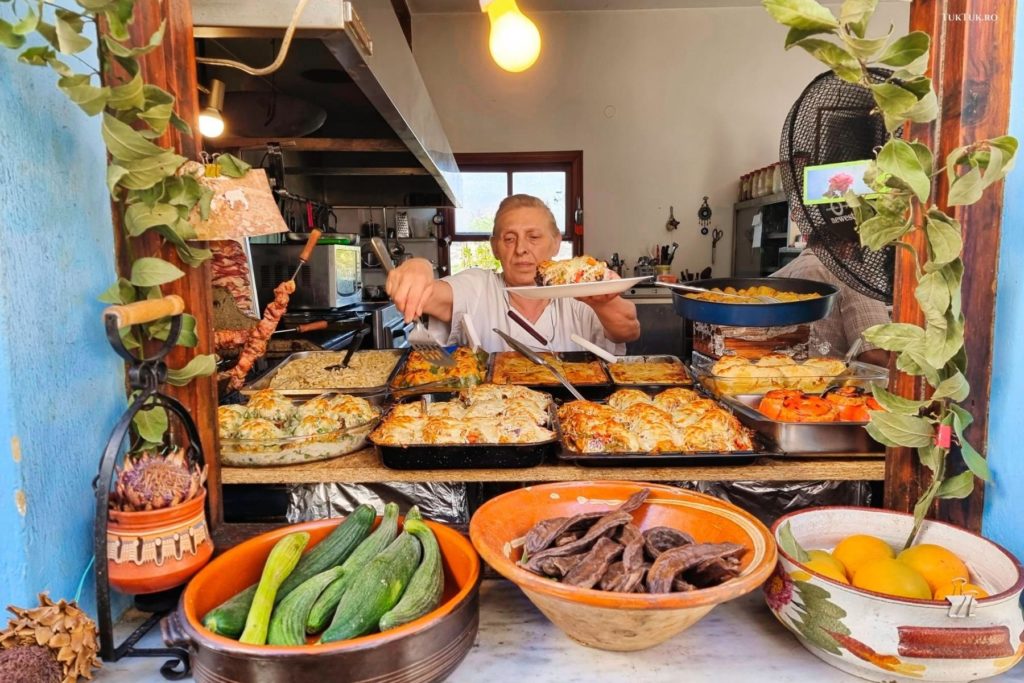
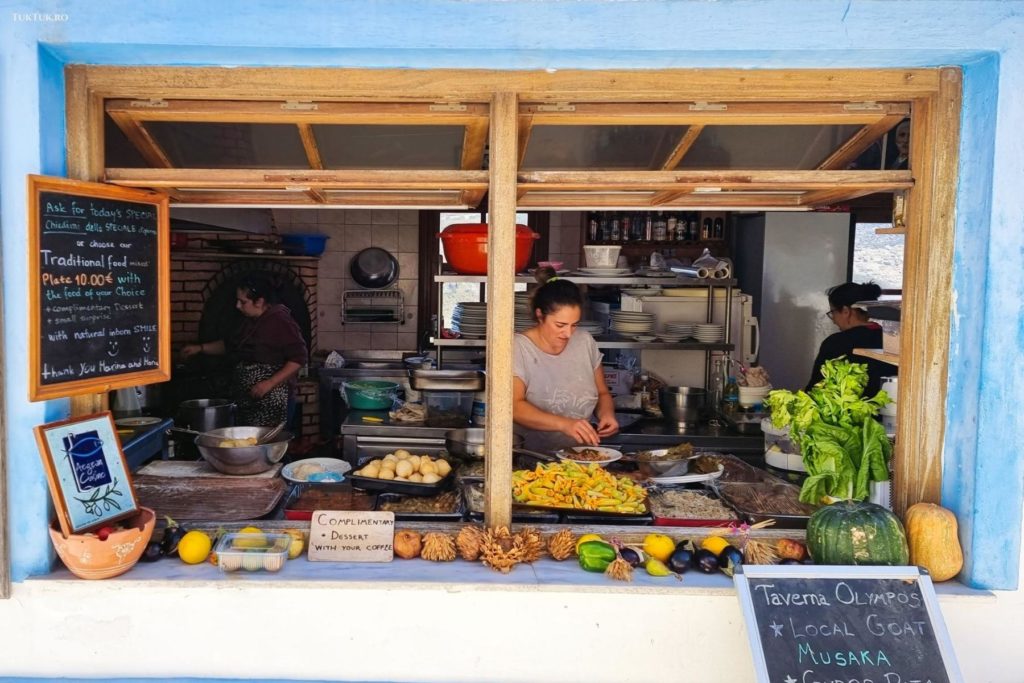
The reason for this custom was that, being very poor, the parents could not share the inheritance with all their children, as they would not get much of it. So they preferred to pass it on to the first-born child, who had to look after his brothers and sisters. Decisions that, while logical, often led to devastating consequences, including major conflicts.
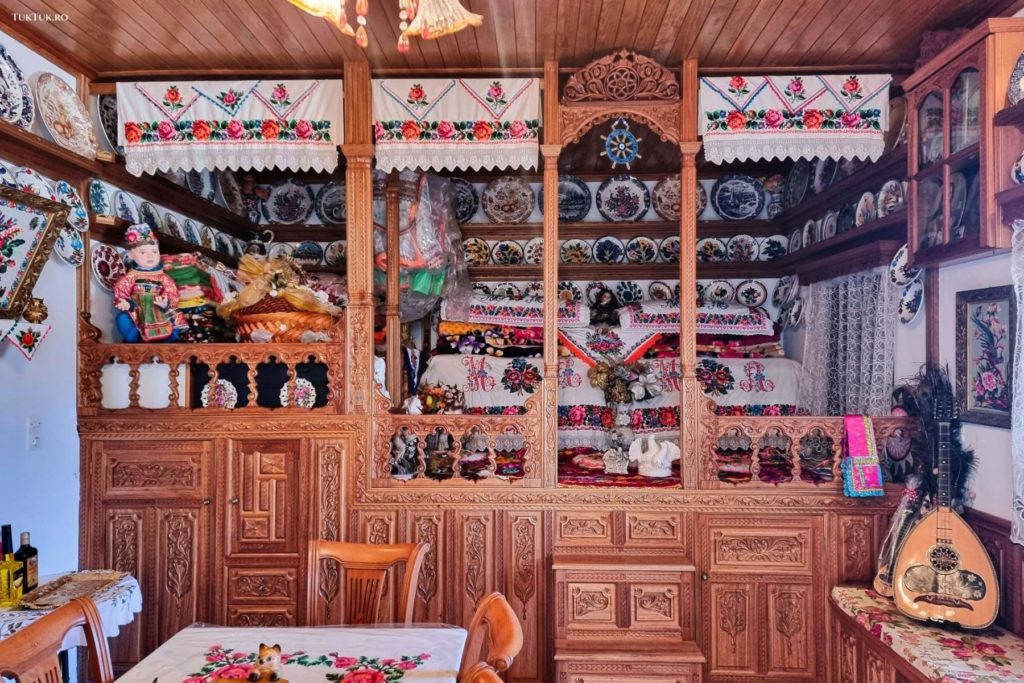
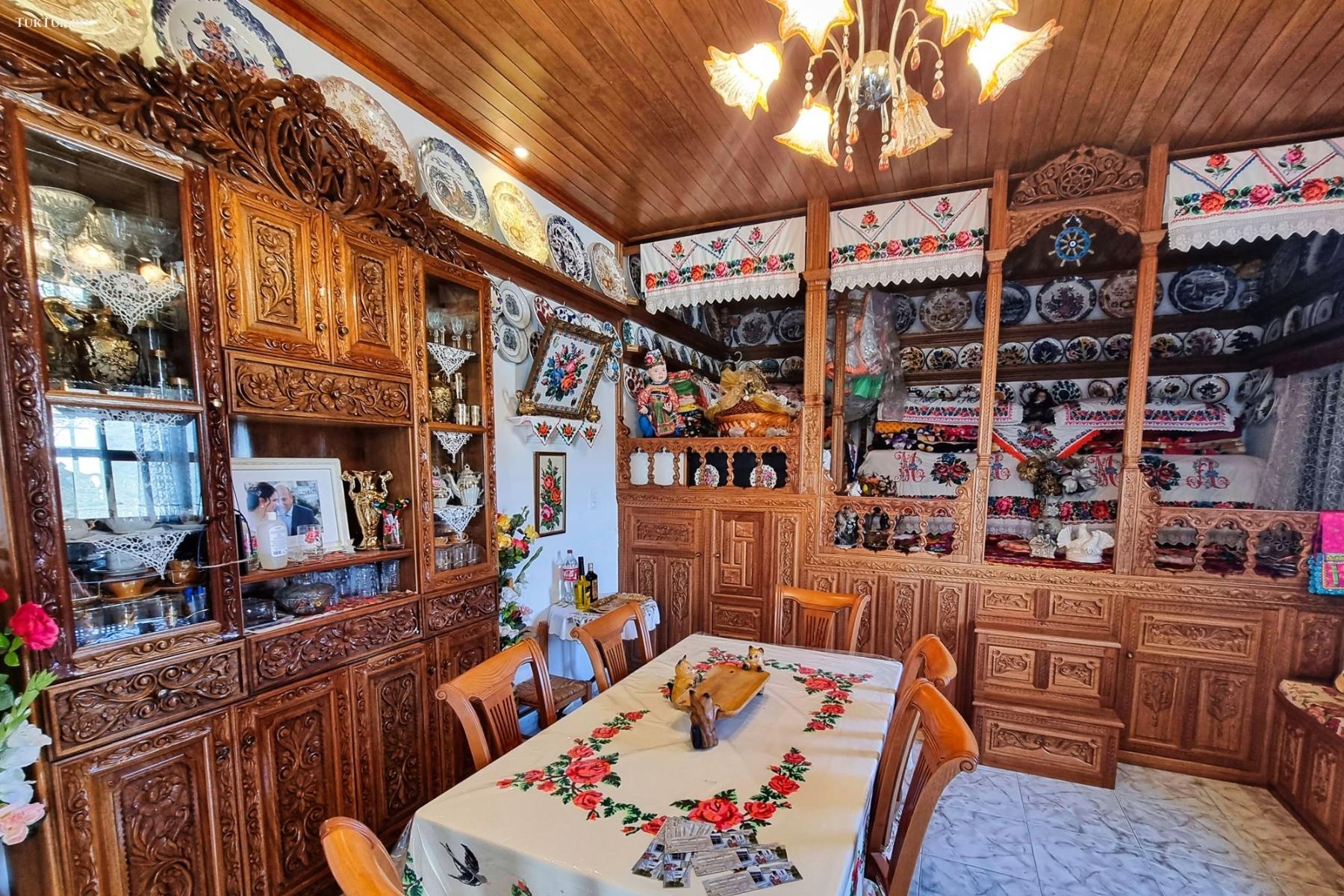
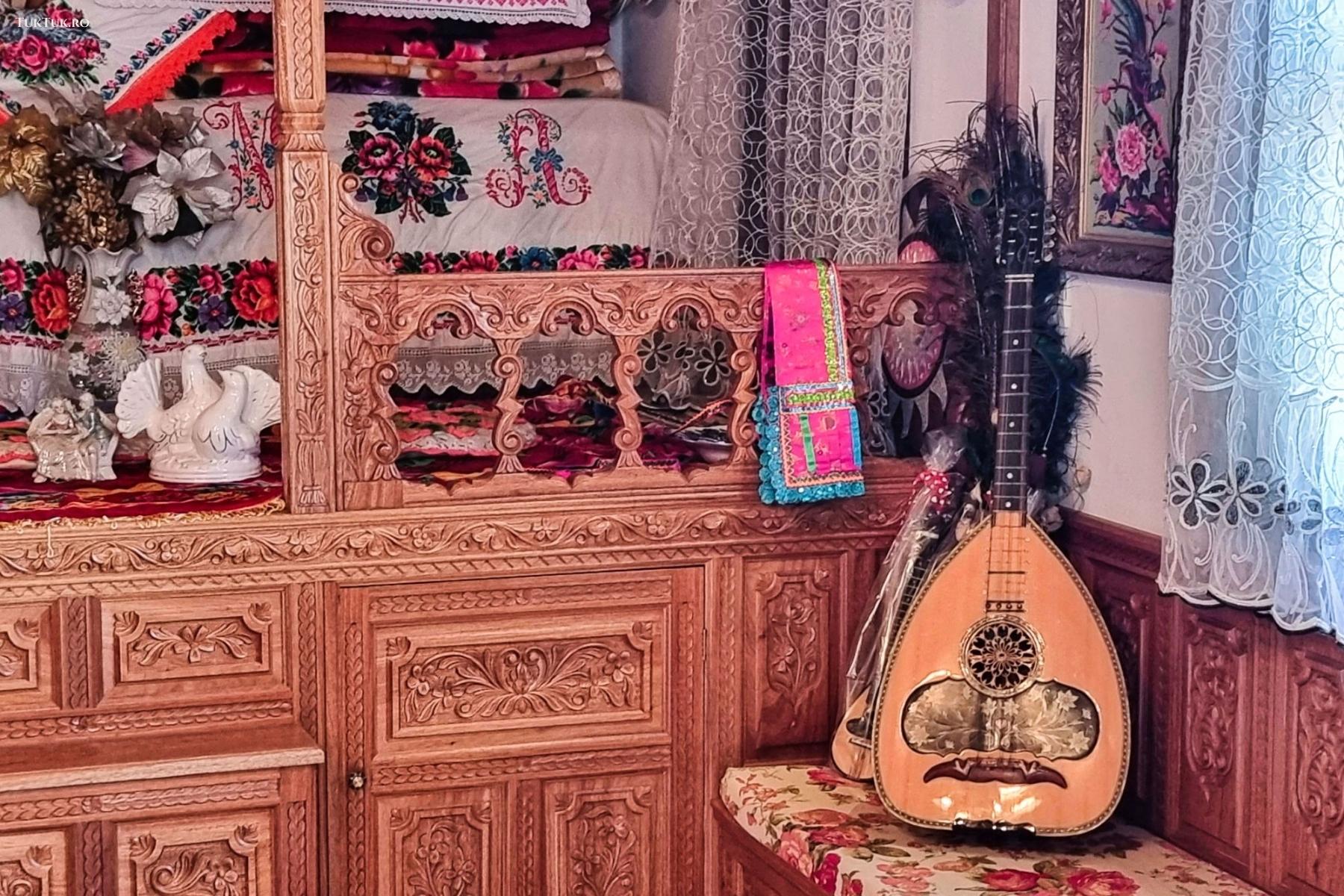
What to see in Olympos
Basically, you can see the village of Olympos in broad strokes within an hour. All you do is stroll along the village’s main pedestrian alleyway, passing souvenir shops with clothes, lace, bags, wooden handicrafts, sweets, etc, alternating with taverns and cafes. For diversity, it’s worth straying off the road and drifting through other narrow village streets, up and down stairs that sometimes lead to the roof of a house.
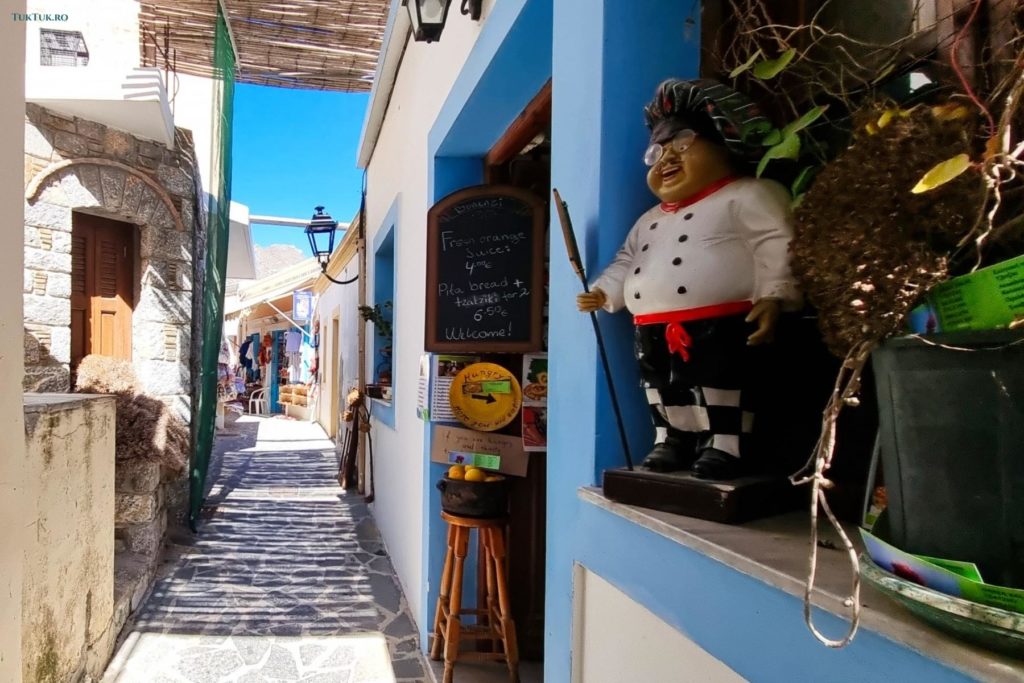
There are many lookout points in the village from where you’ll capture spectacular photos, either on the seaward side or the other, towards the mountains. The color contrasts are fascinating. Plus, look out for the sunset in Olympos, which is said to be fabulous (I didn’t catch it, unfortunately, every time I arrived in the lunch area).
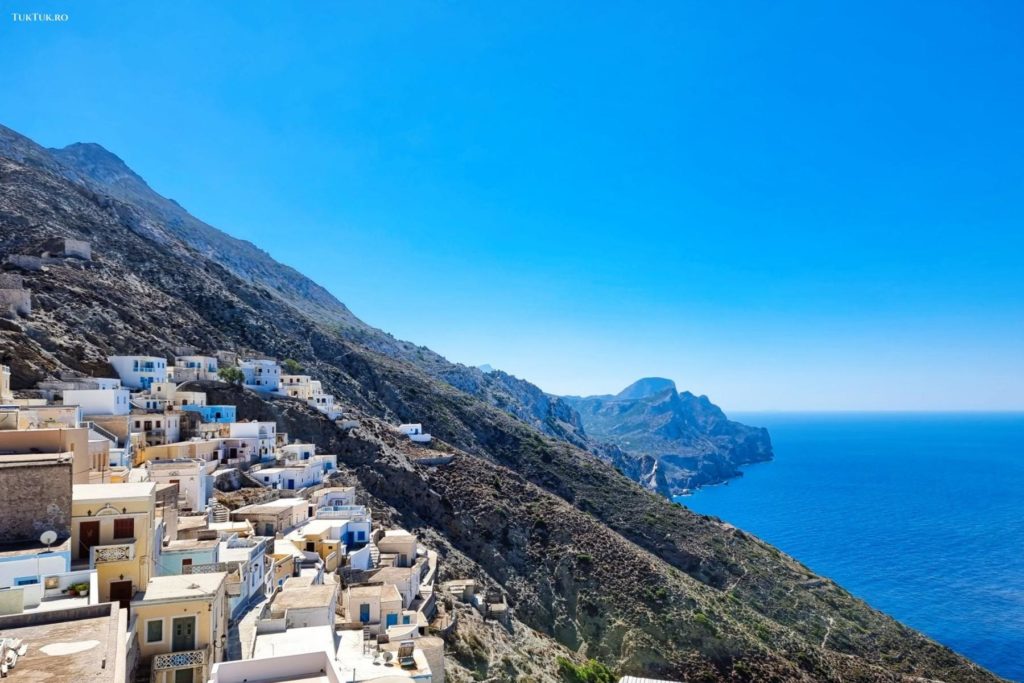
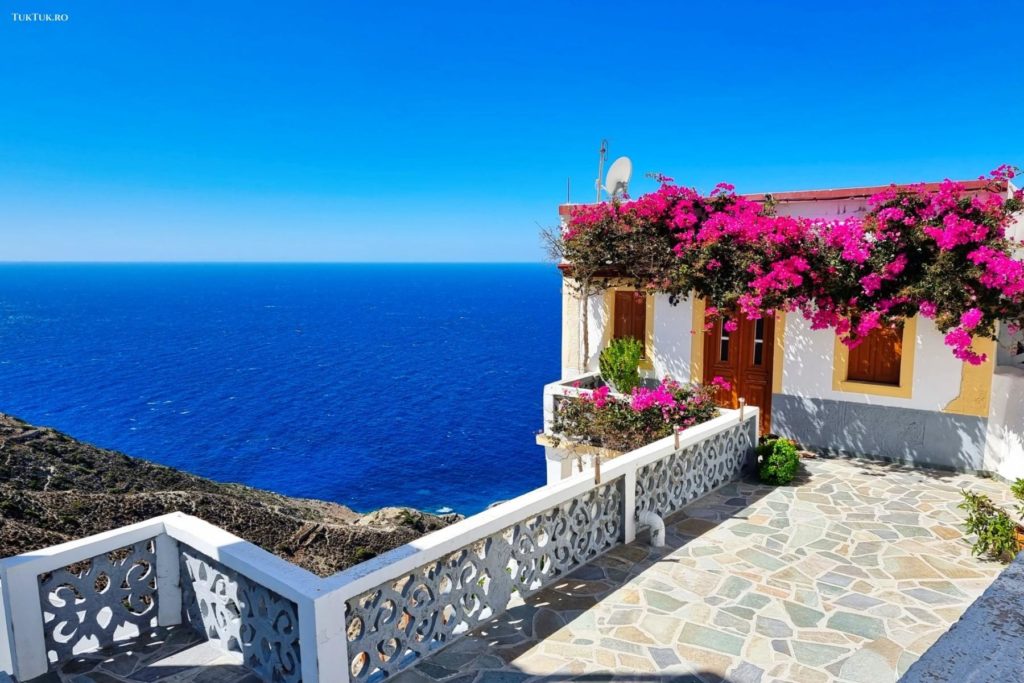

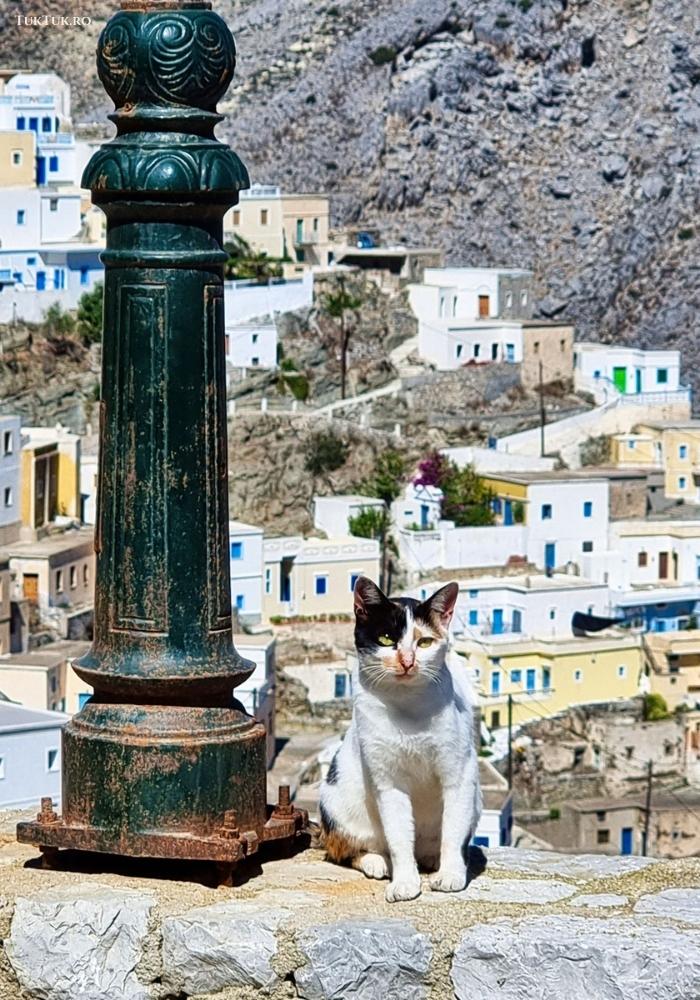
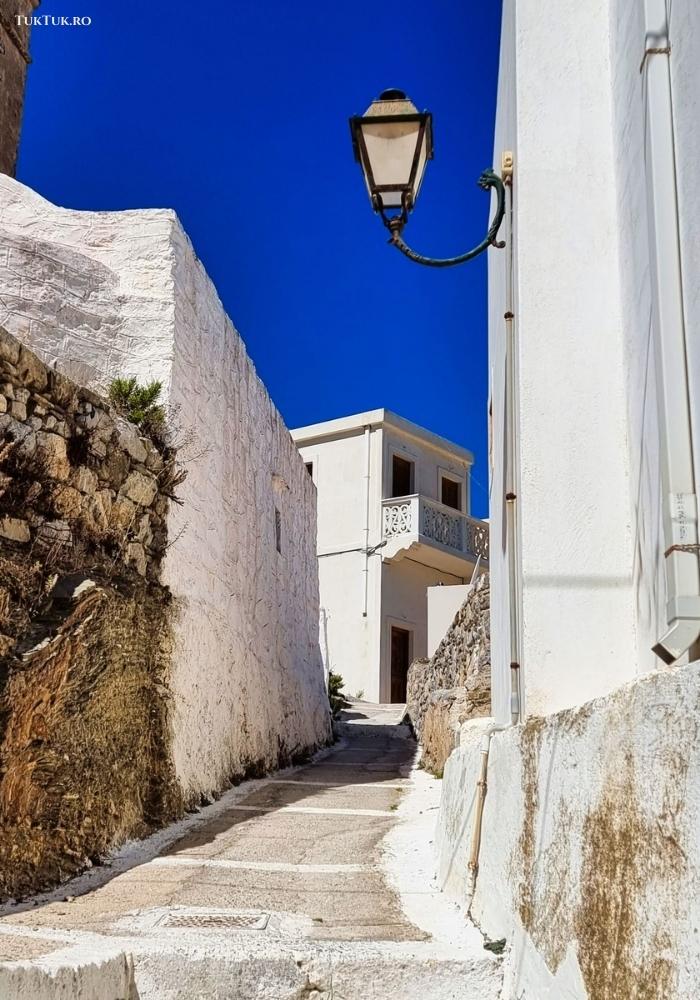

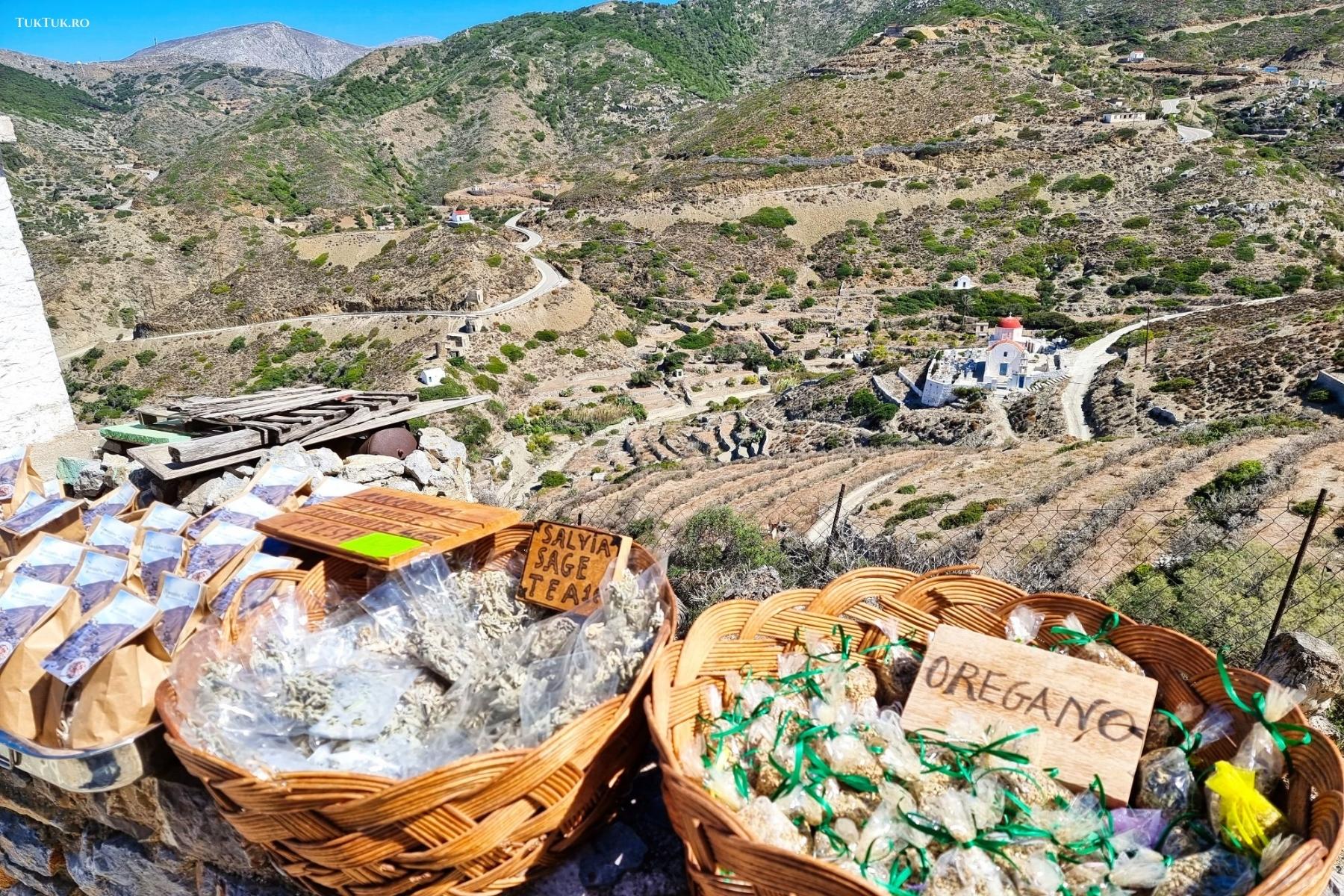

Like any Greek village (and all 12 villages of Karpathos), Olympos is dotted with little churches. The most important, whose tower stands out from a distance, piercing the whole settlement, is the church of the Assumption of the Virgin Mary, dedicated to St Mary, built in Byzantine style. Its interior is painted with frescoes dating from the years of Turkish rule (although the Turks never had a physical presence in Karpathos). Also inside are many valuable icons and other gold-plated sacred objects. In addition to this church, you’ll find chapels and other places of worship everywhere, each with its own charm.
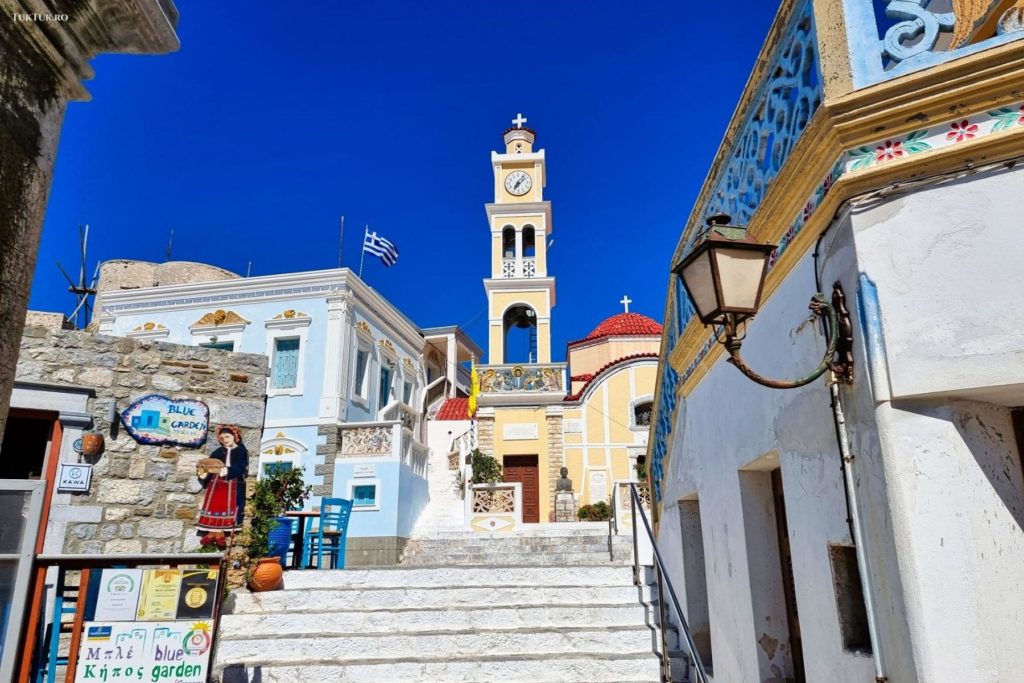
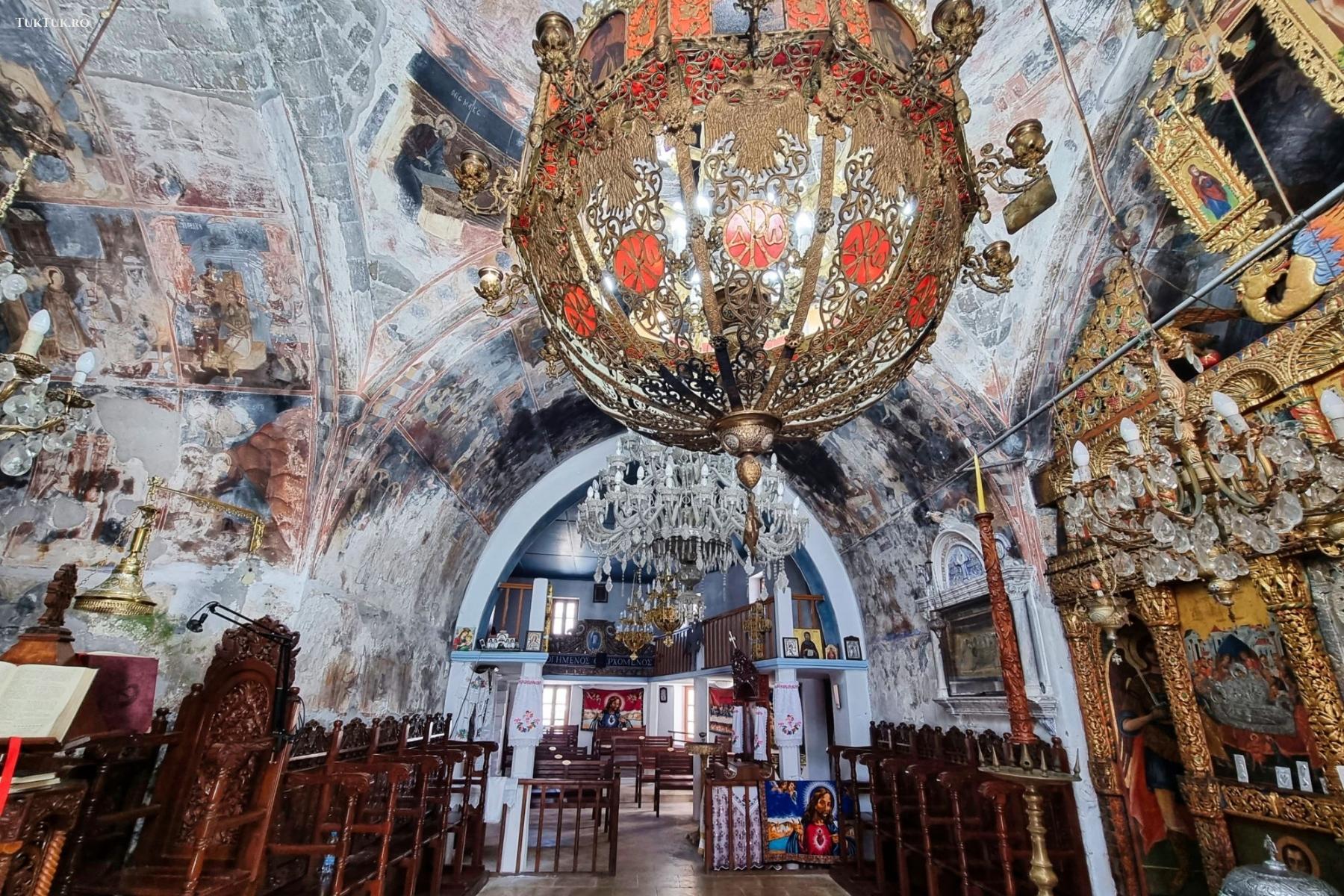
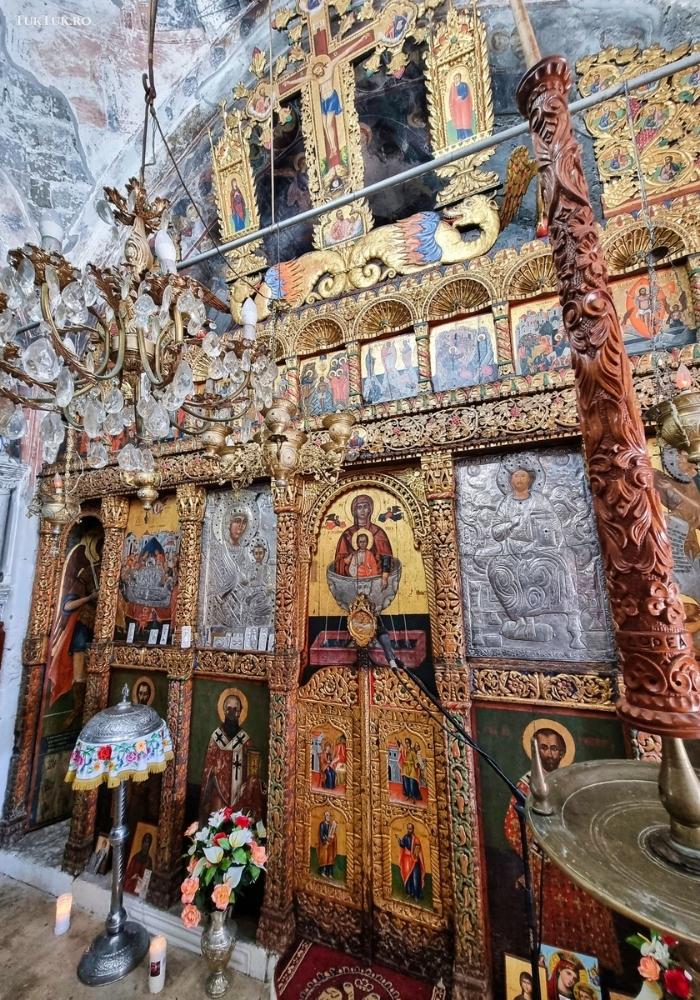
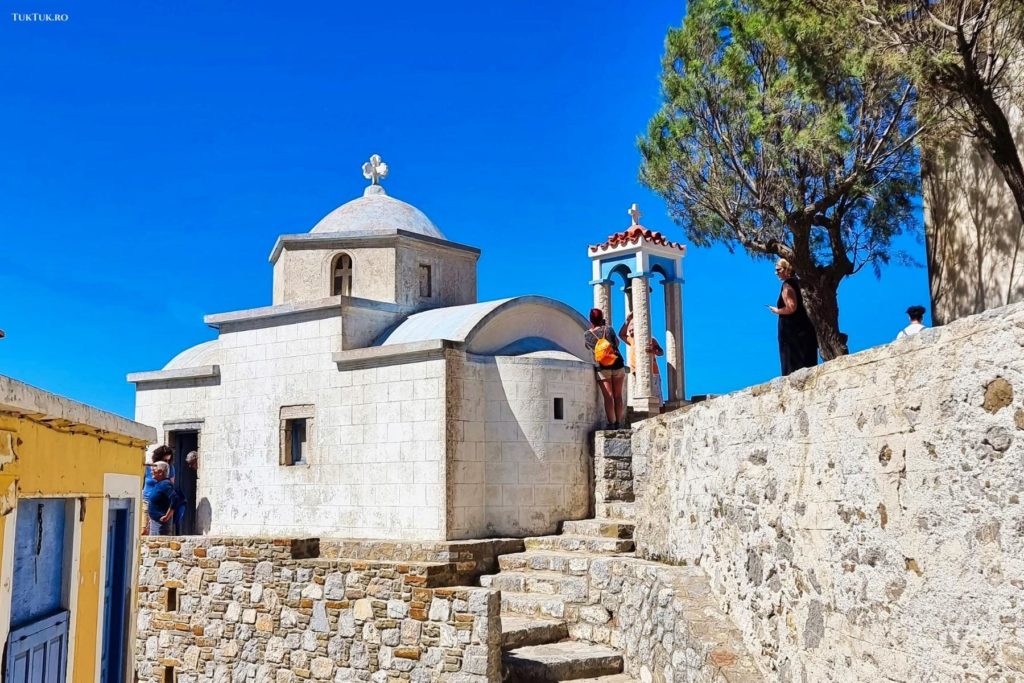
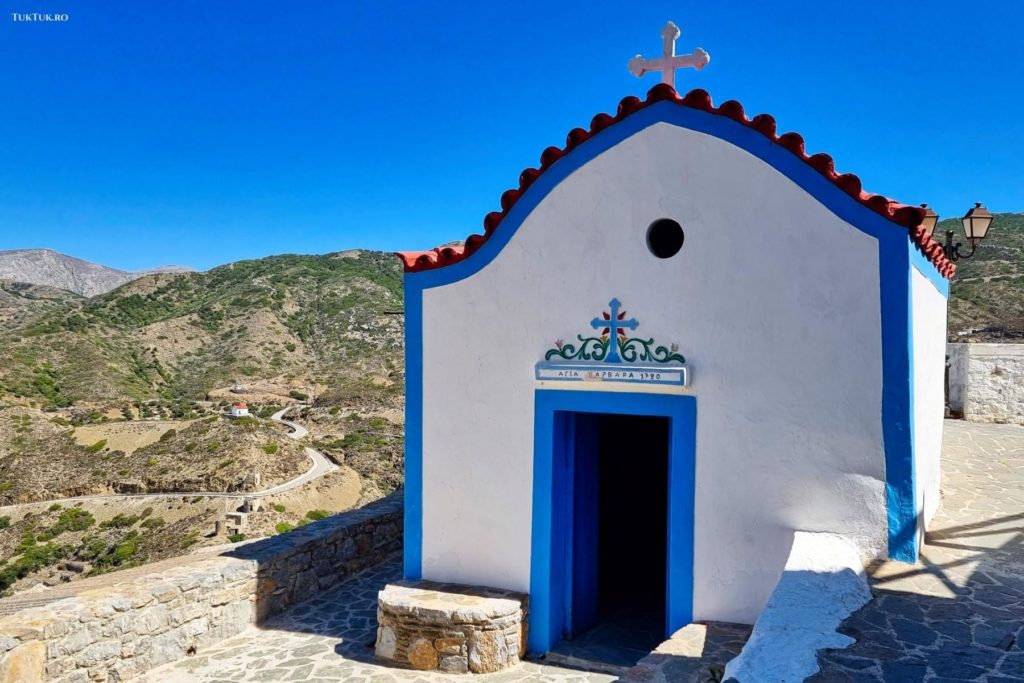
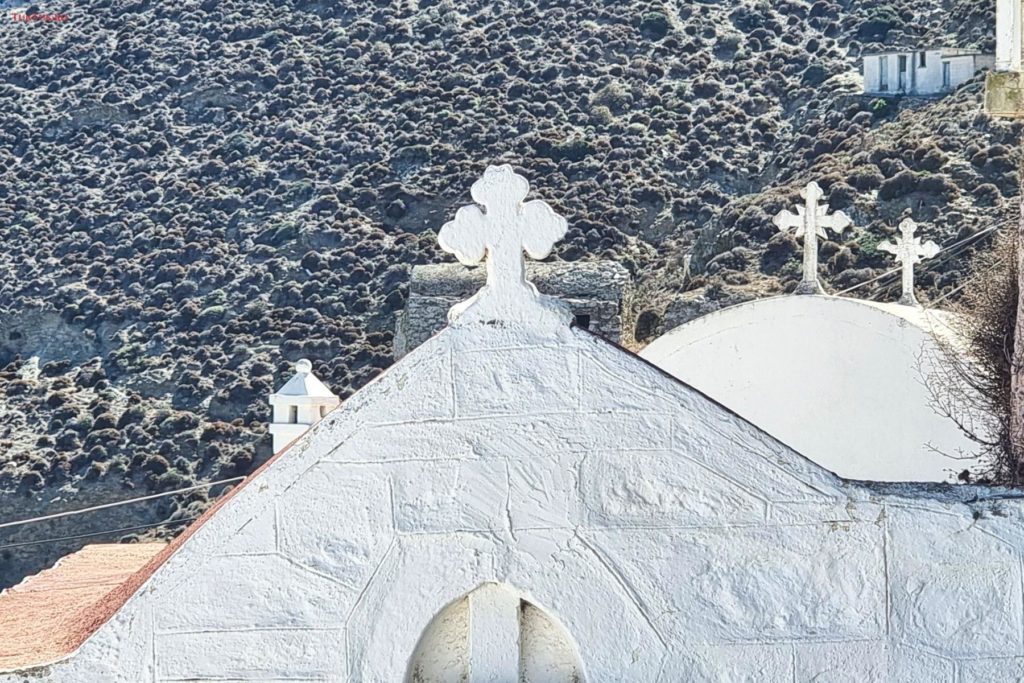
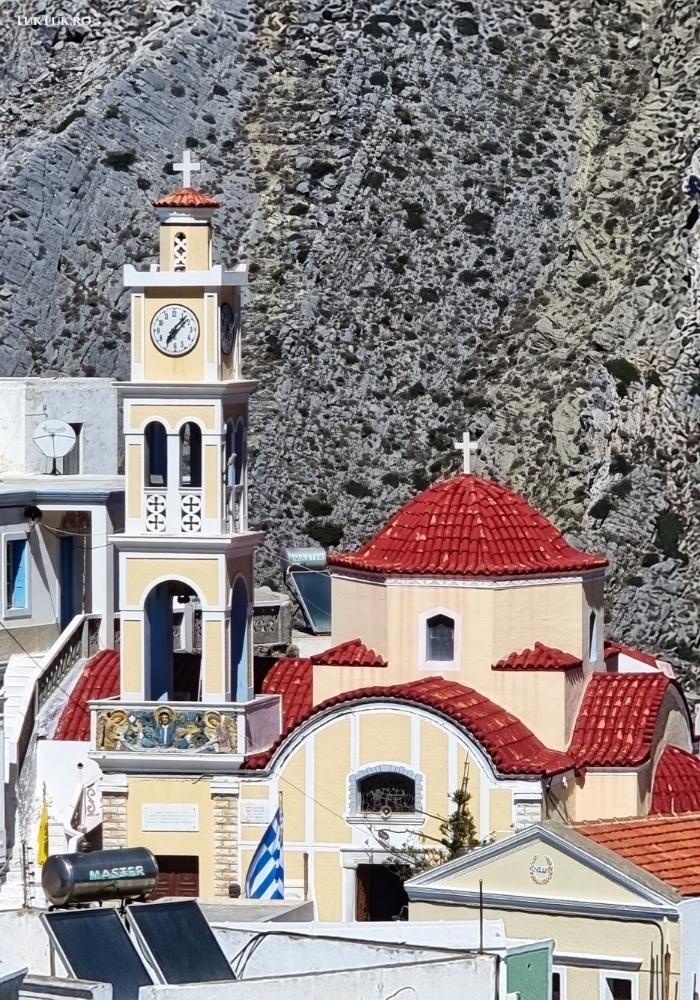
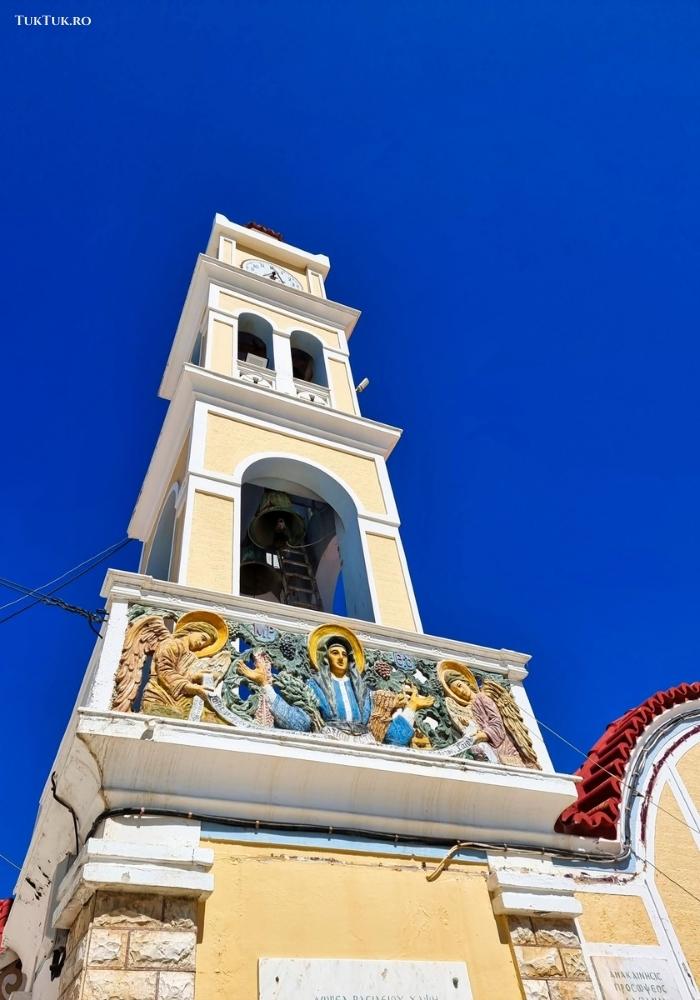
Another defining feature of the Olympos village landscape is the windmills. Non-functional, for the most part, but they convey the message that Olympos was one of the largest flour producers on the Greek islands decades ago. Most of these windmills lie in ruins or are turned into warehouses, but I have seen efforts (quite modest at the moment) being made to refurbish some of them.
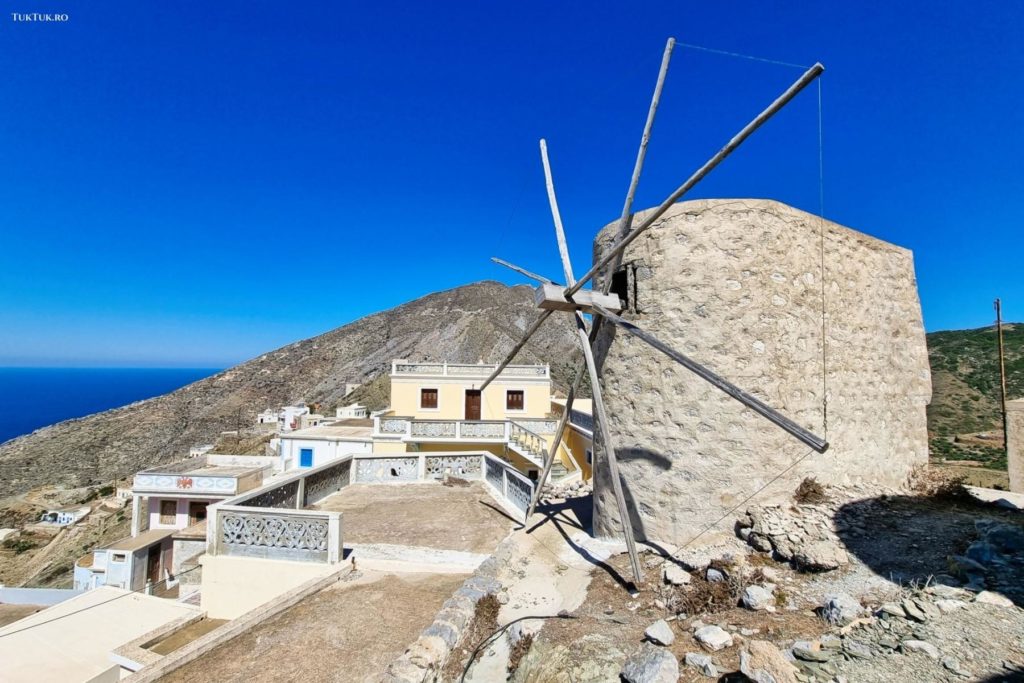
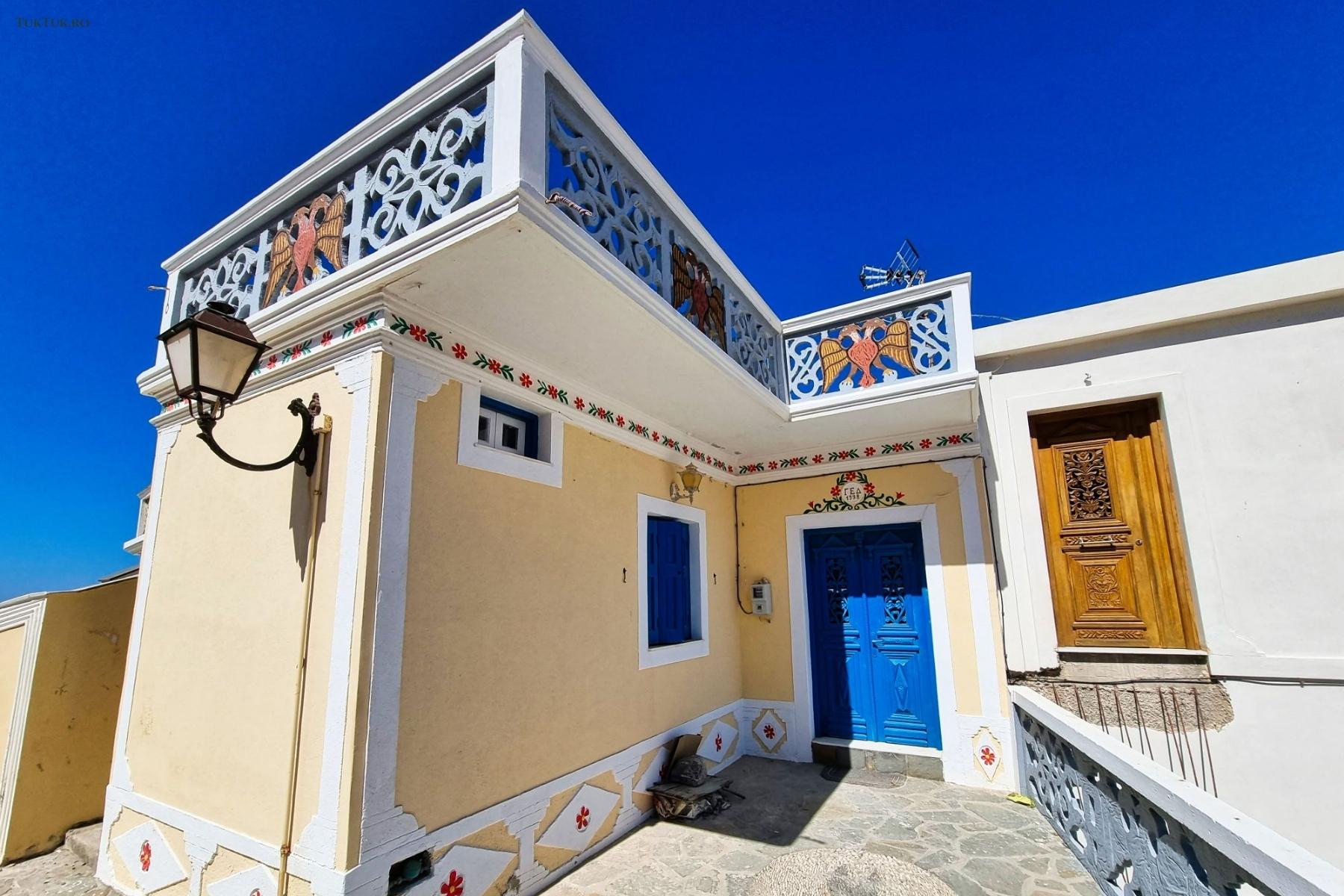
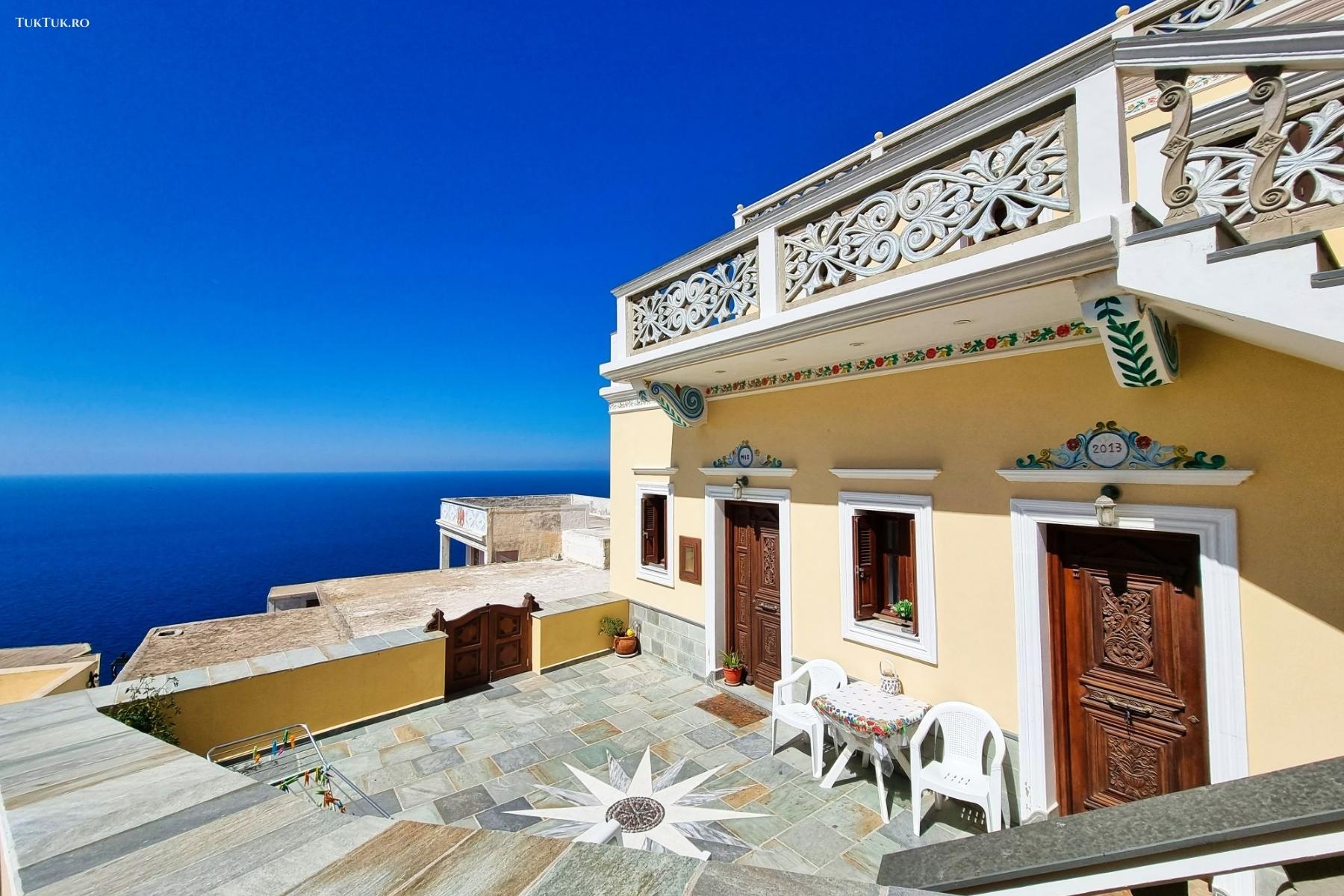
Where to eat in Olympos
Walking through the alleys of Olympos, you’ll pass by several taverns that will probably entice you with the dishes on display or the menus at the entrance. However, the restaurant you shouldn’t miss, and which has gained a real reputation, is the Milos (Mill) Tavern, at the opposite end of the entrance.
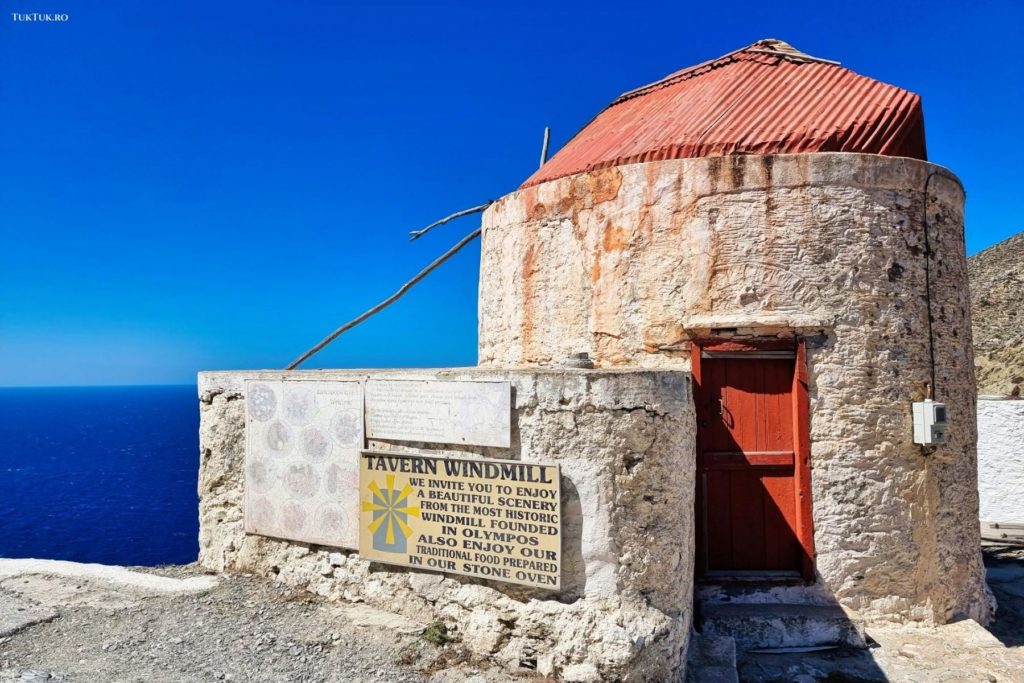
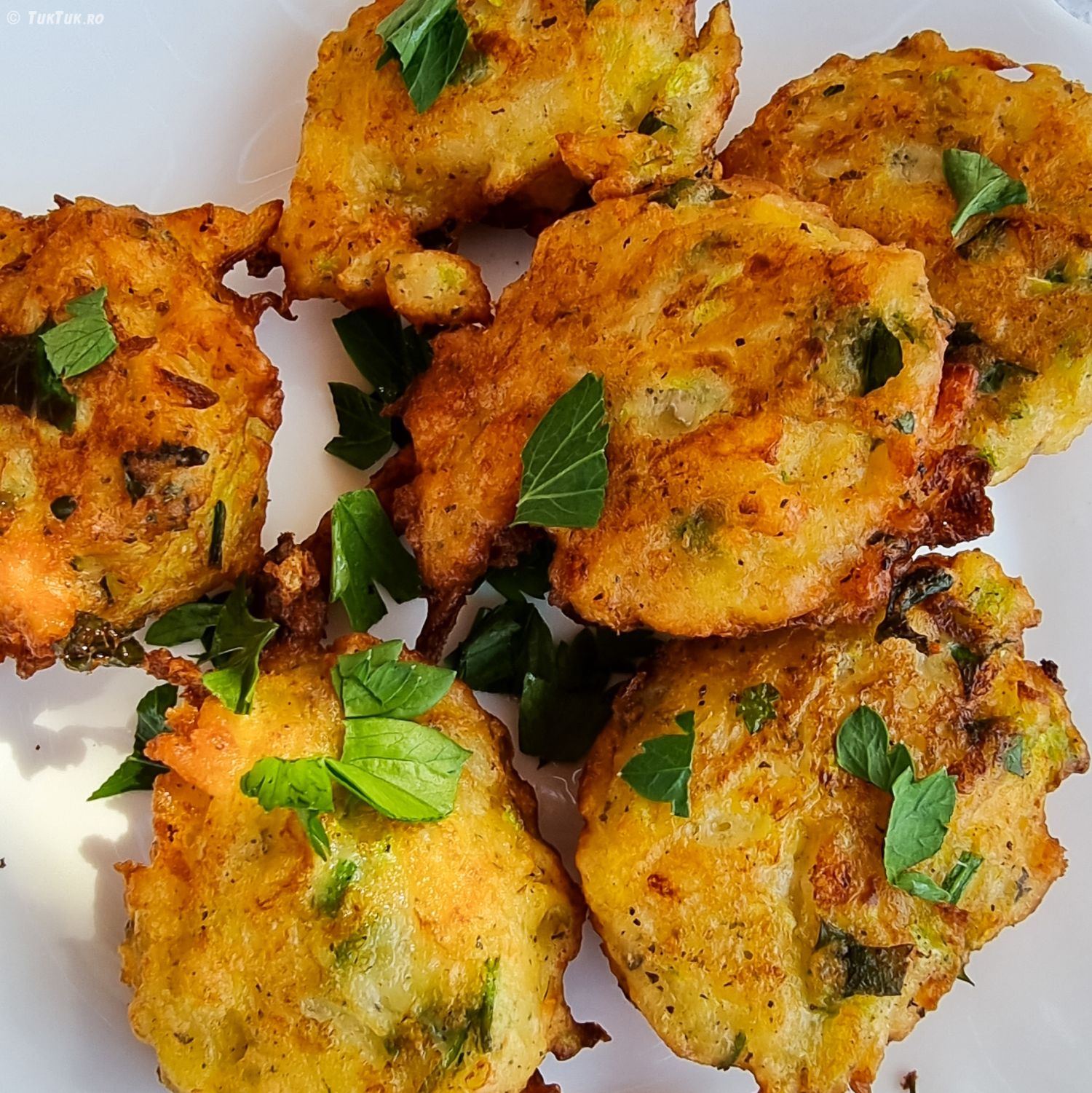
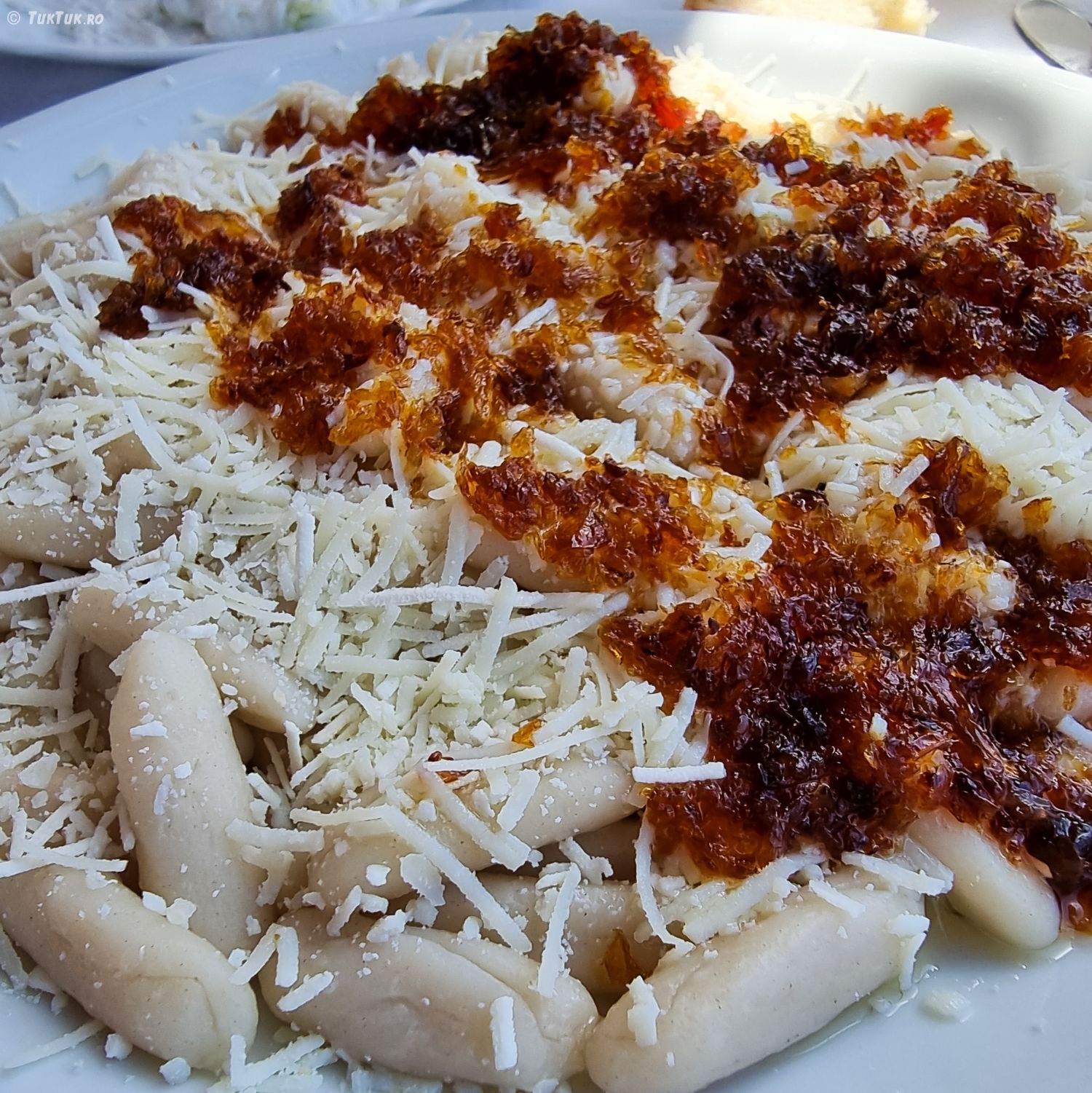
Milos is a special place for several reasons. One would be the view. Unfortunately, I ate there at lunchtime, not in the evening, when you apparently get a dreamy sunset. Even so, eating with the fabulous blue of the sea before your eyes is an absolute delight.
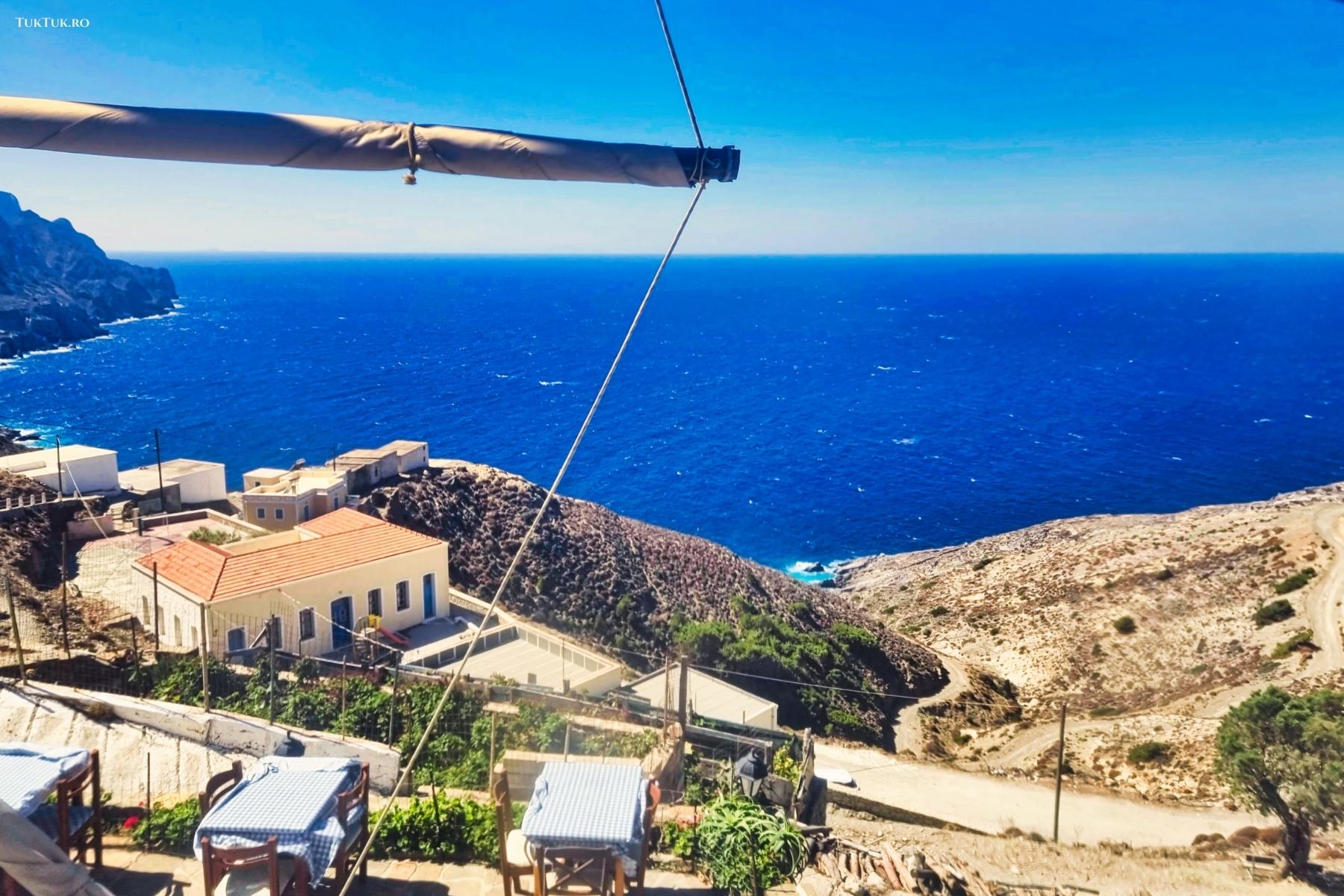
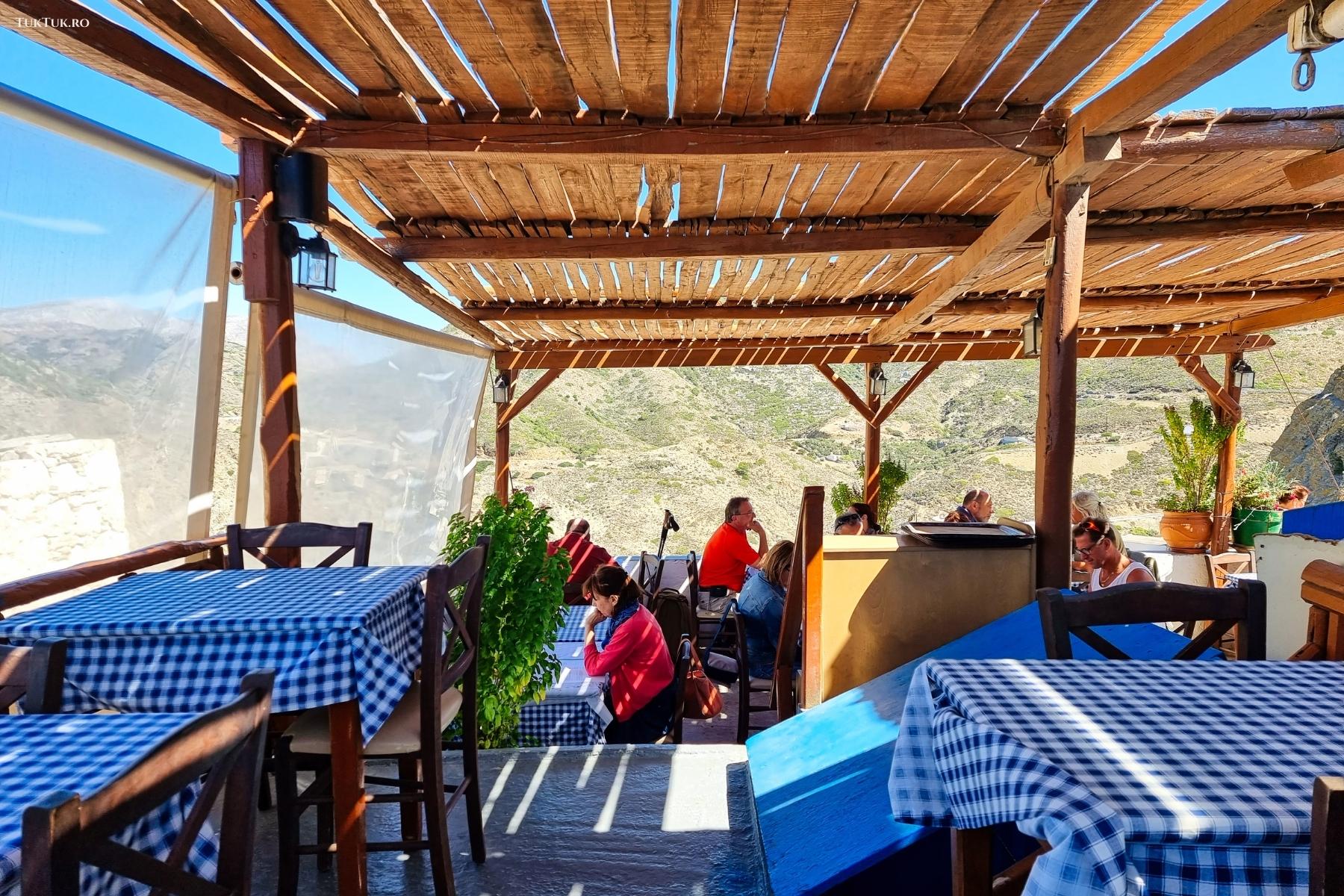
The second reason is, of course, the food. Very tasty. A short menu, but one that will definitely make you not regret your choice. Here we tried the famous makarounes, the famous Karpathian pasta, topped with grated cheese and caramelized onions. You can also try the zucchini meatballs, tzatziki, moussaka, or eggplant imam.
Last but not least, eating in an old (working!) windmill is a reason in itself to decide that Milos deserves all the chances in the world when you get hungry in Olympos.
Conclusion
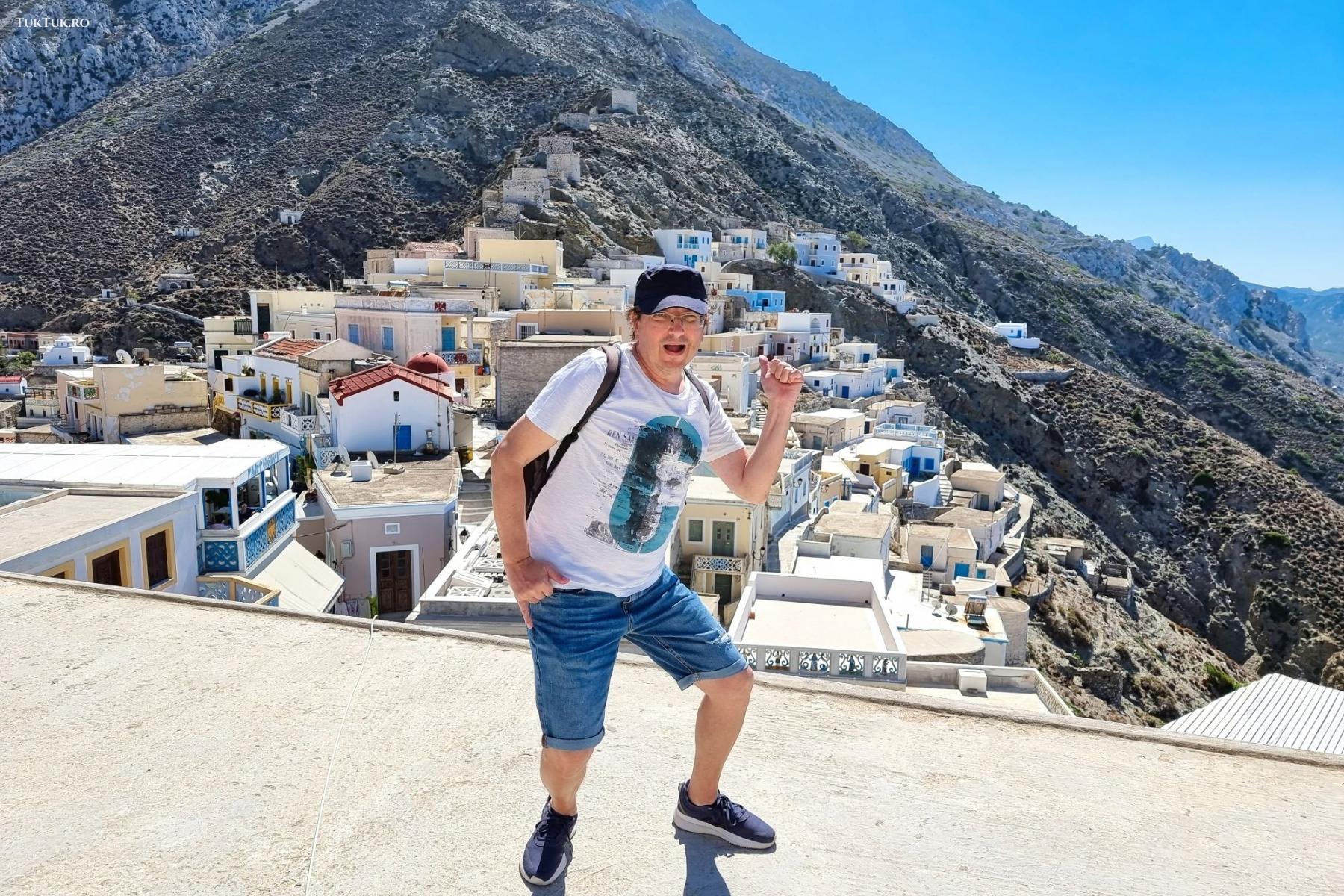
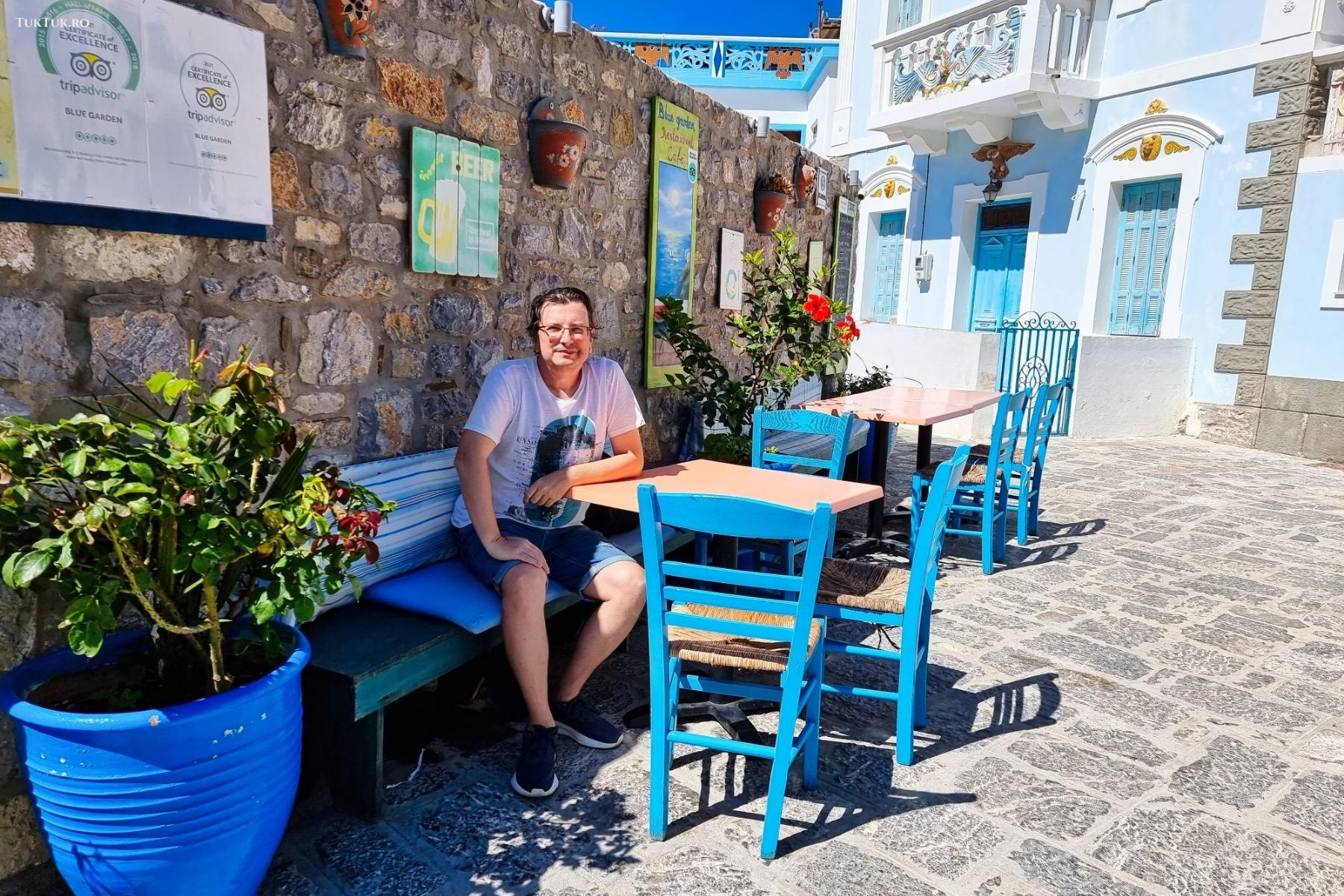
All in all, the village of Olympos on the island of Karpathos is one of those divine places that will make you discover, once again, how beautiful the world we live in can be (and how stupid we are for destroying it every day).
Go to Karpathos for a unique holiday and visit this charming settlement to enjoy its traditions, people, and landscapes!
Olympos video
Pin it!
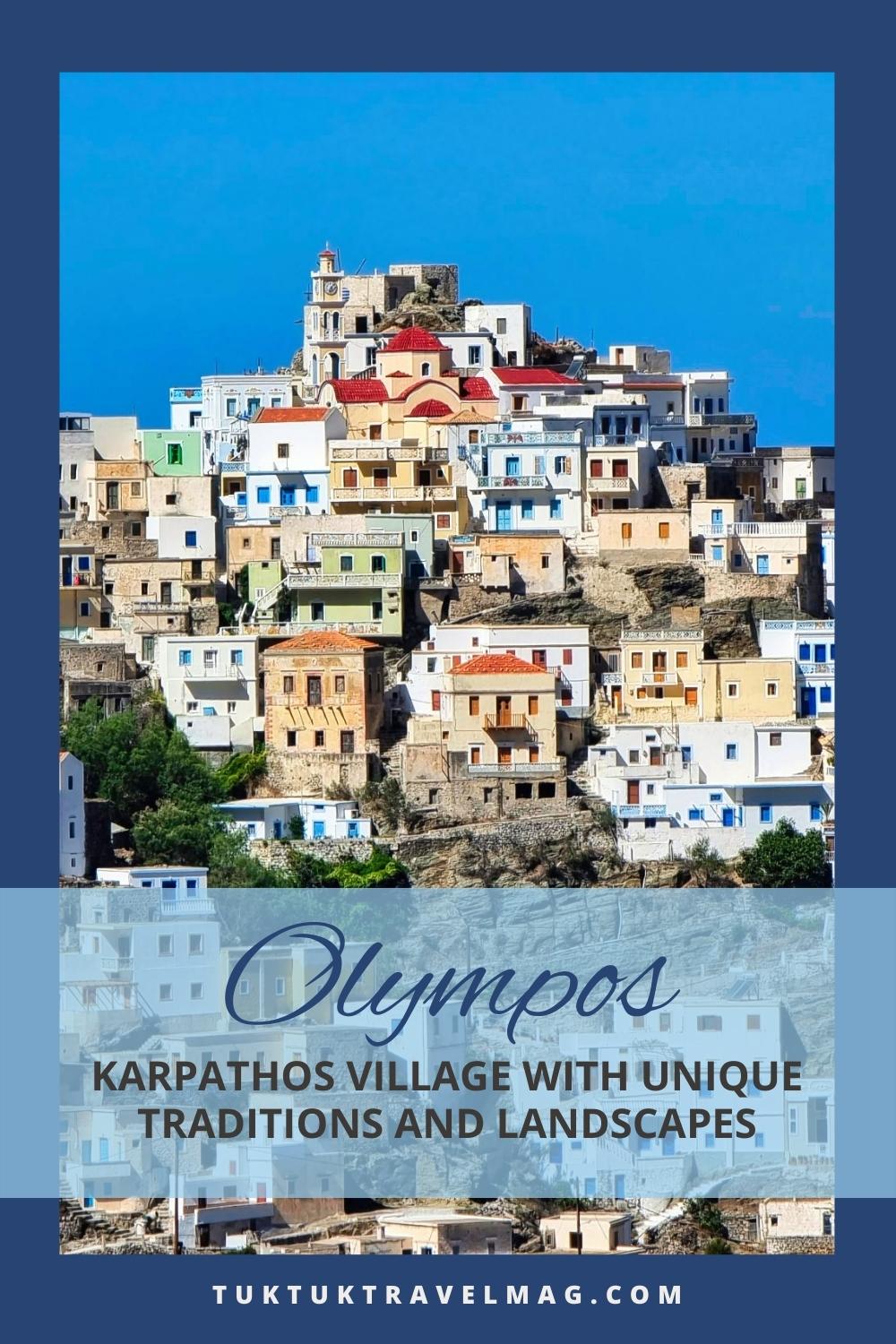
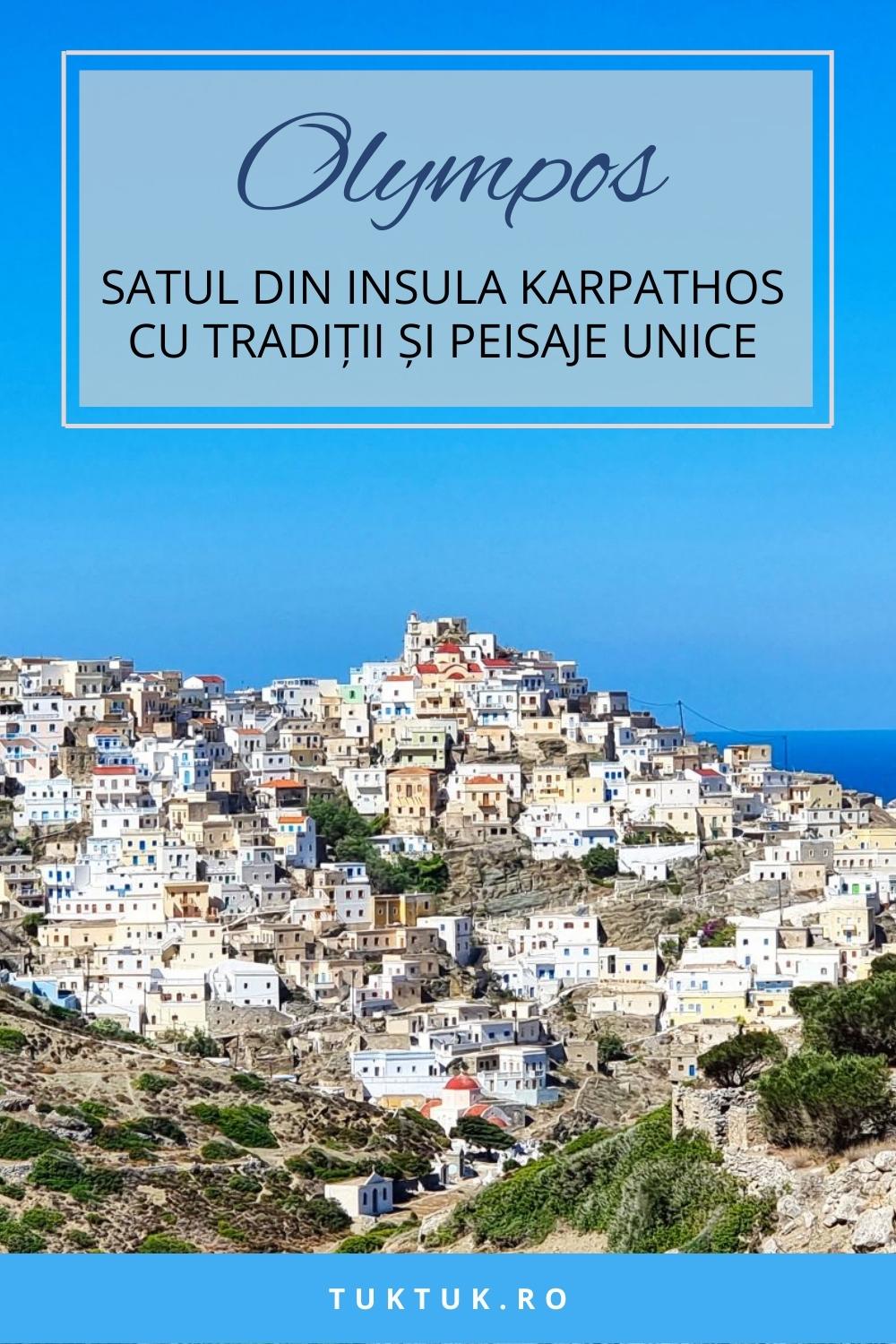
You may also like: Aegina Island – a vacation in the Saronic archipelago

